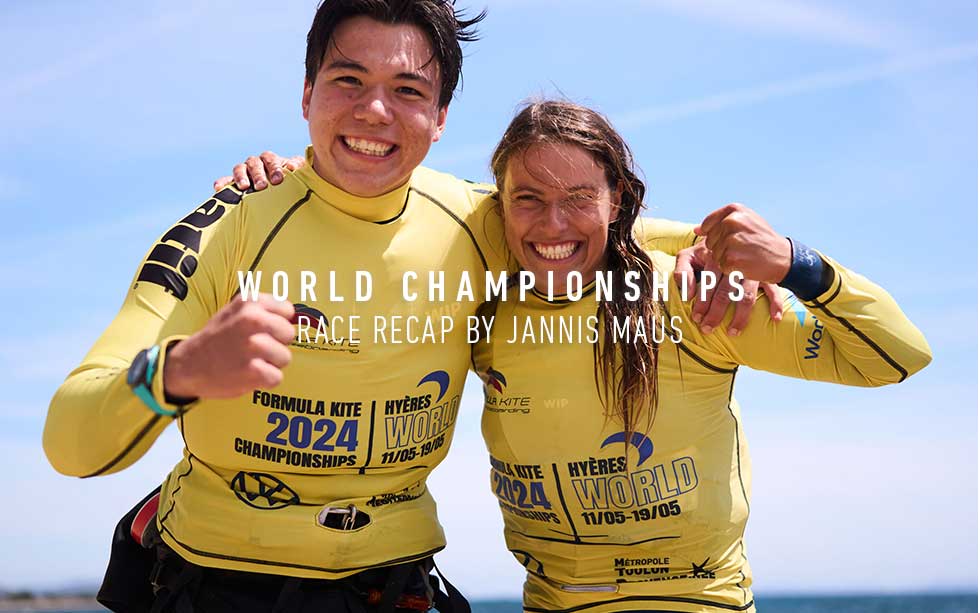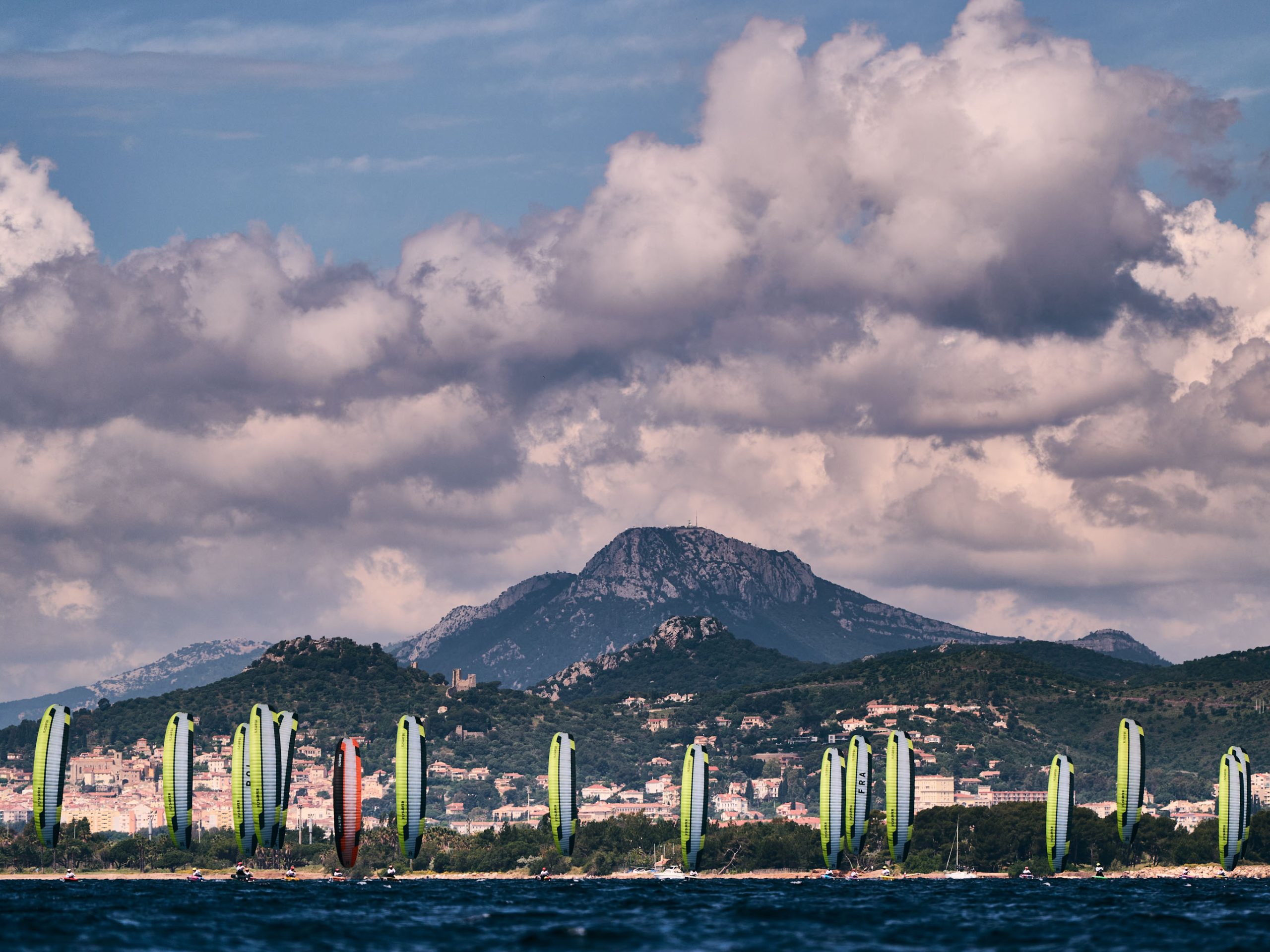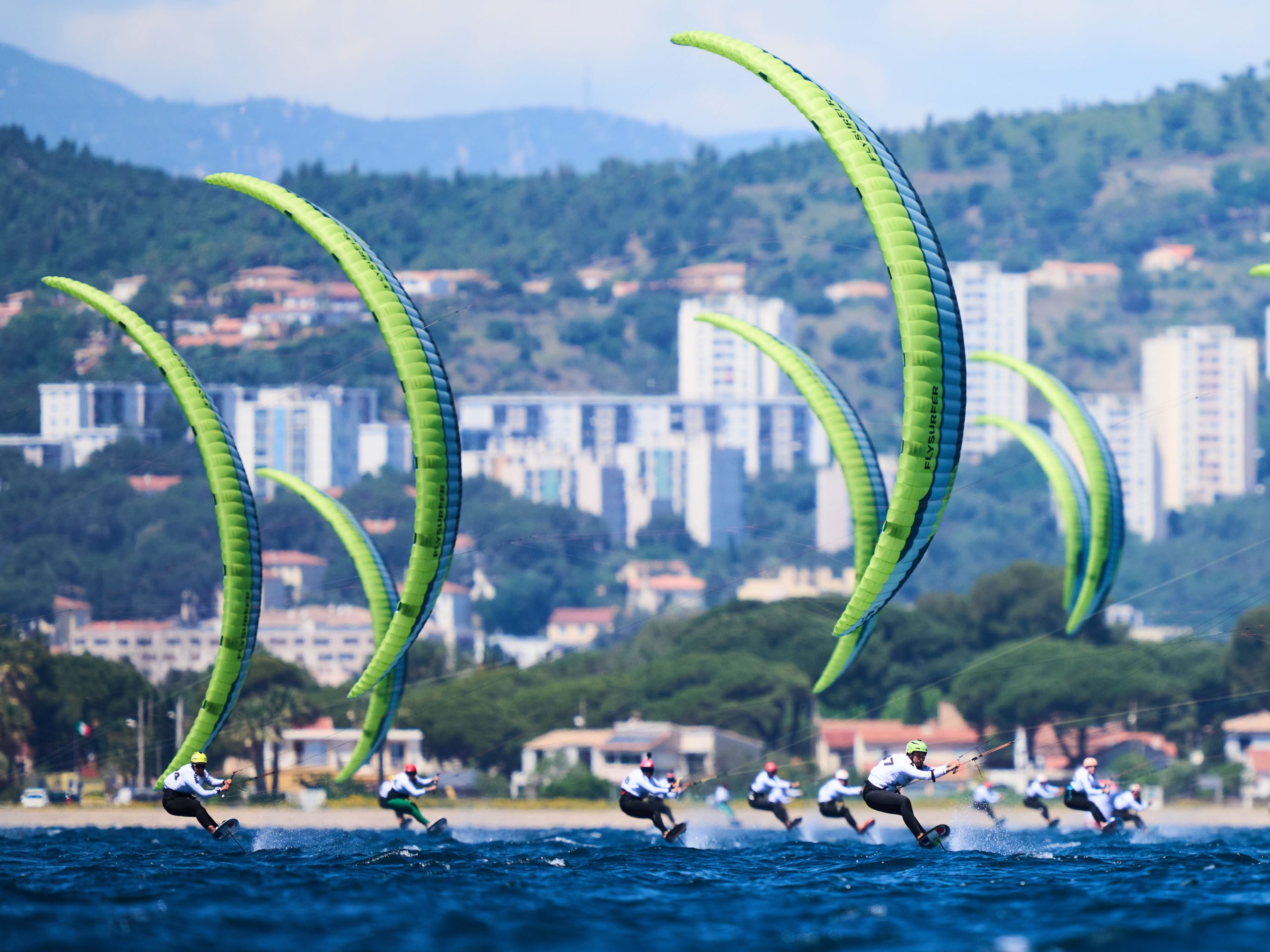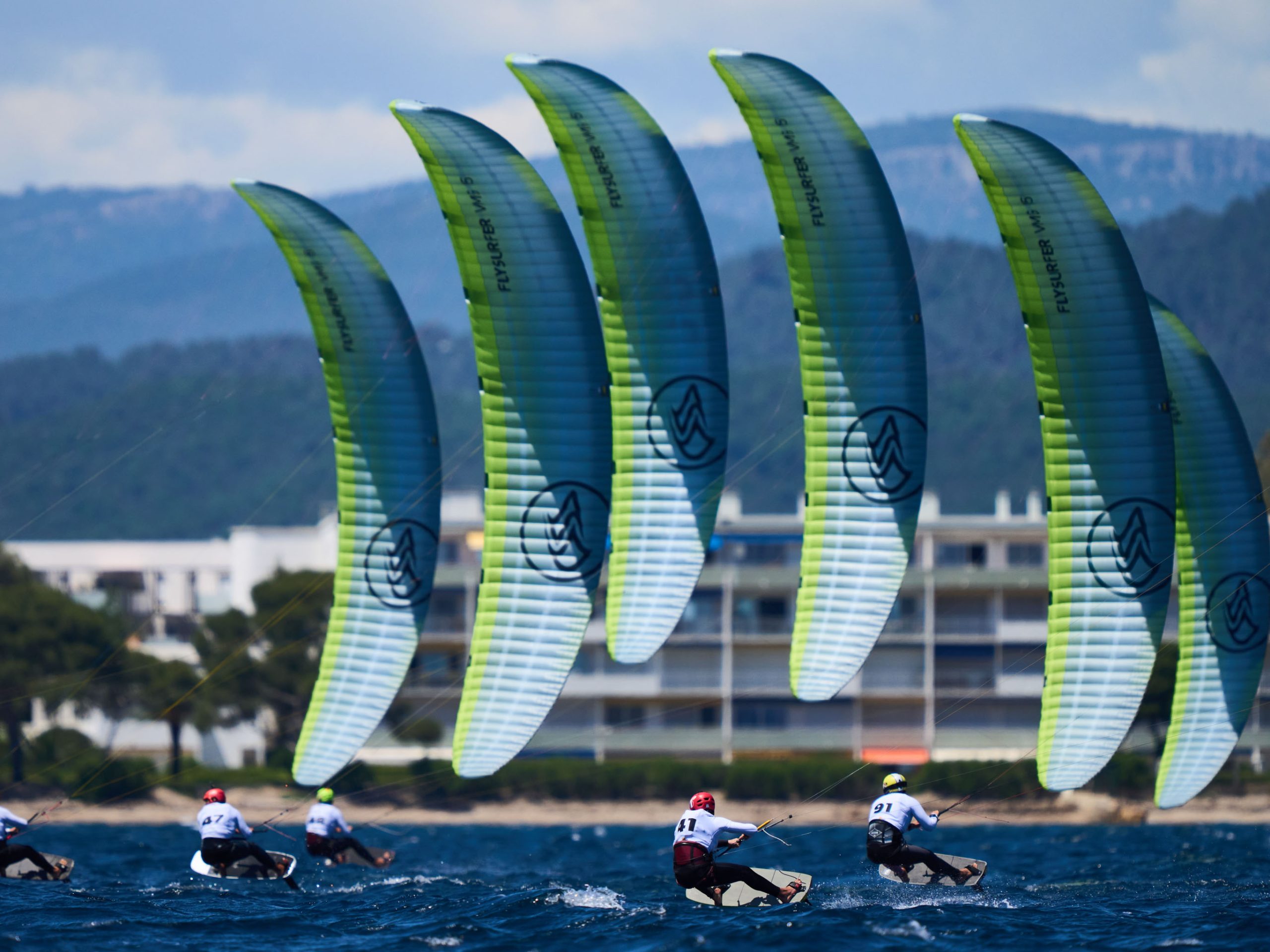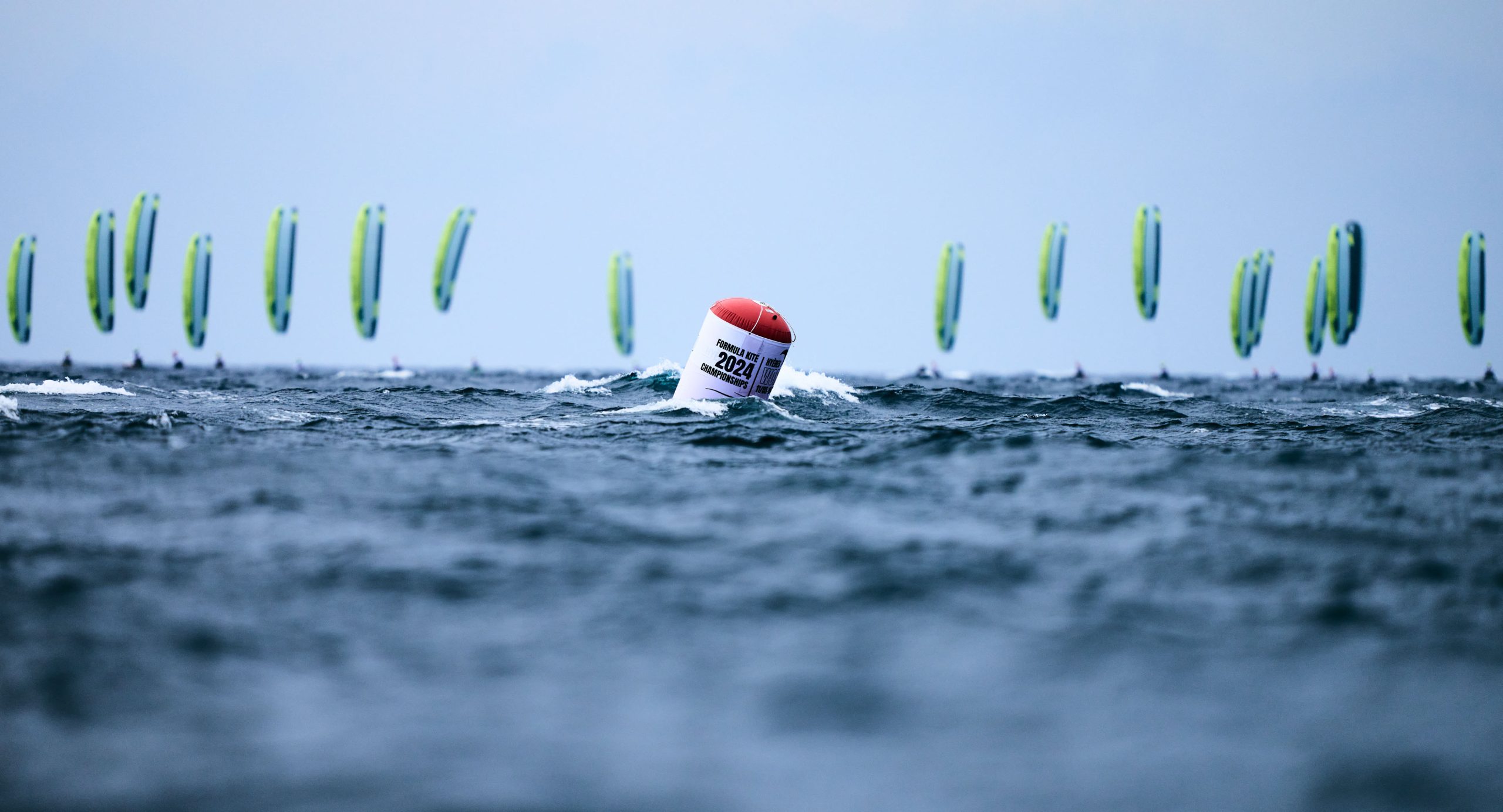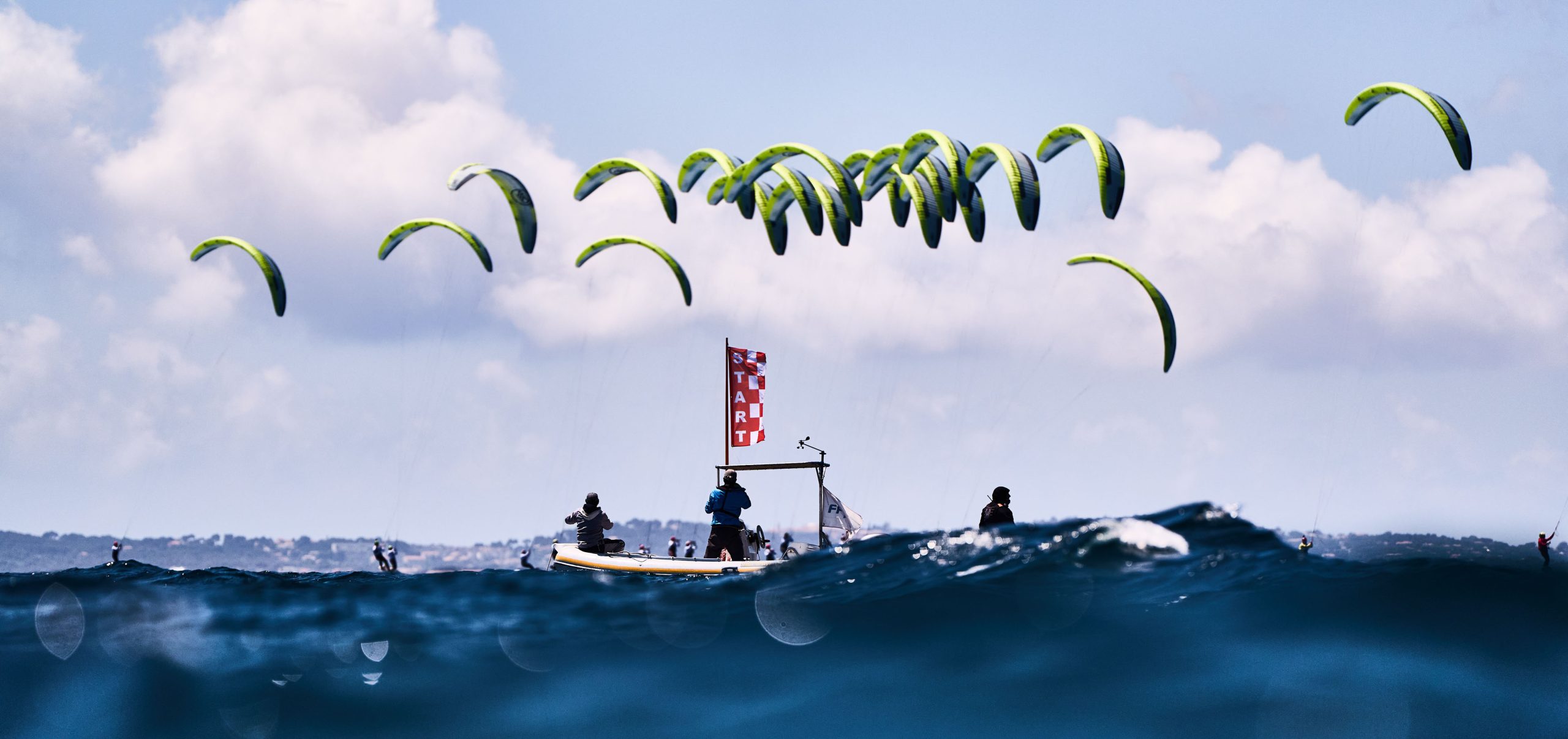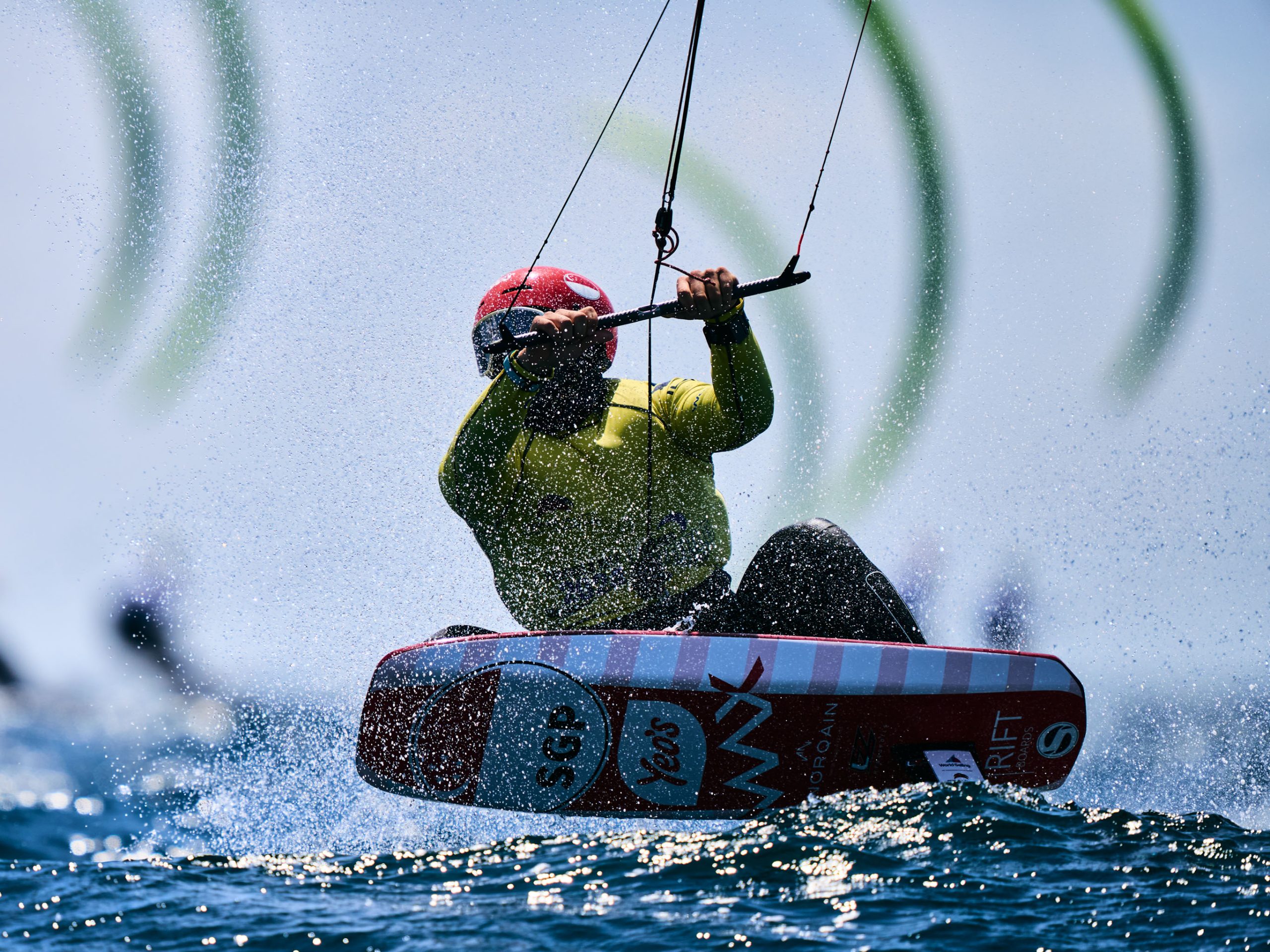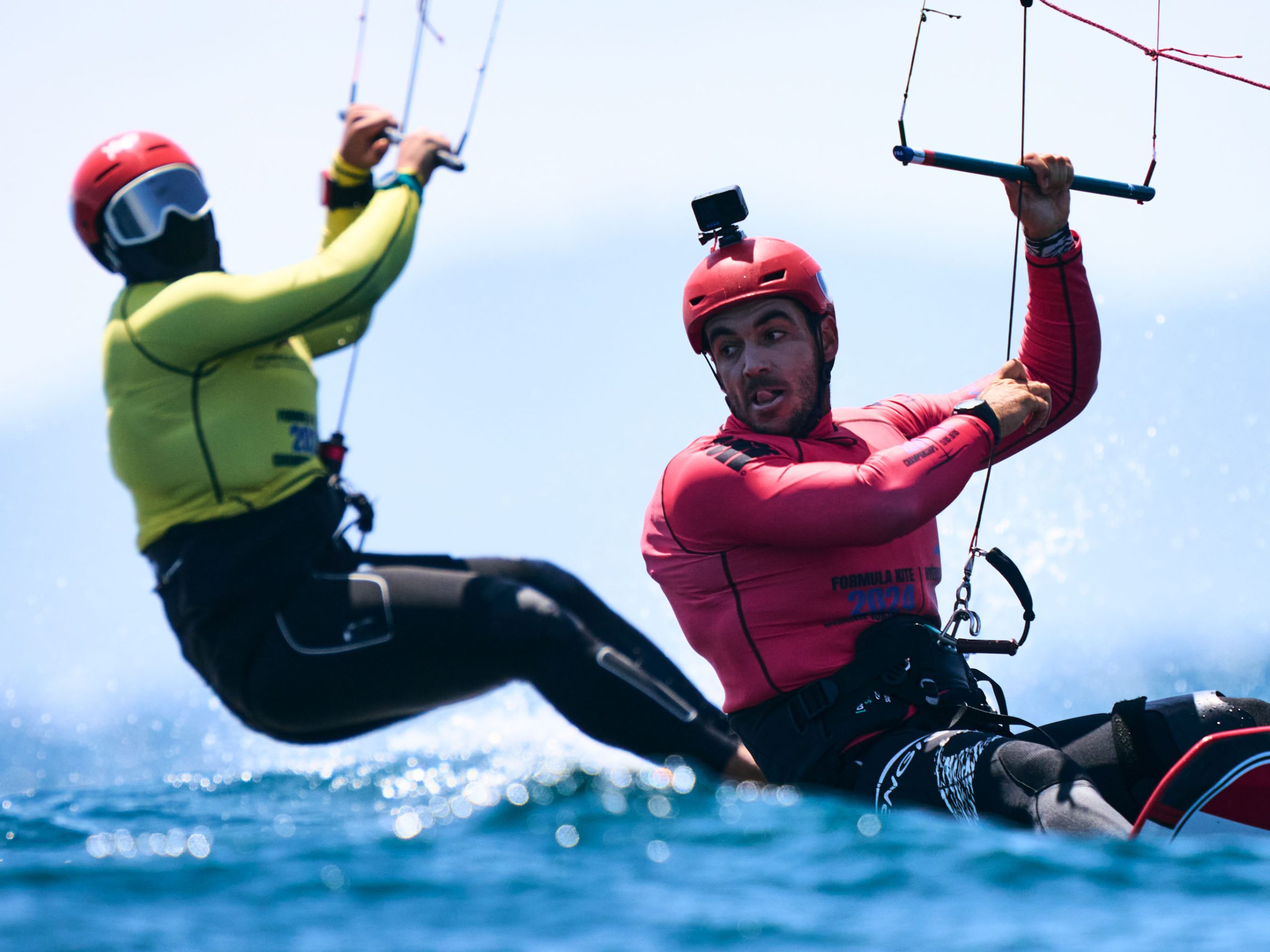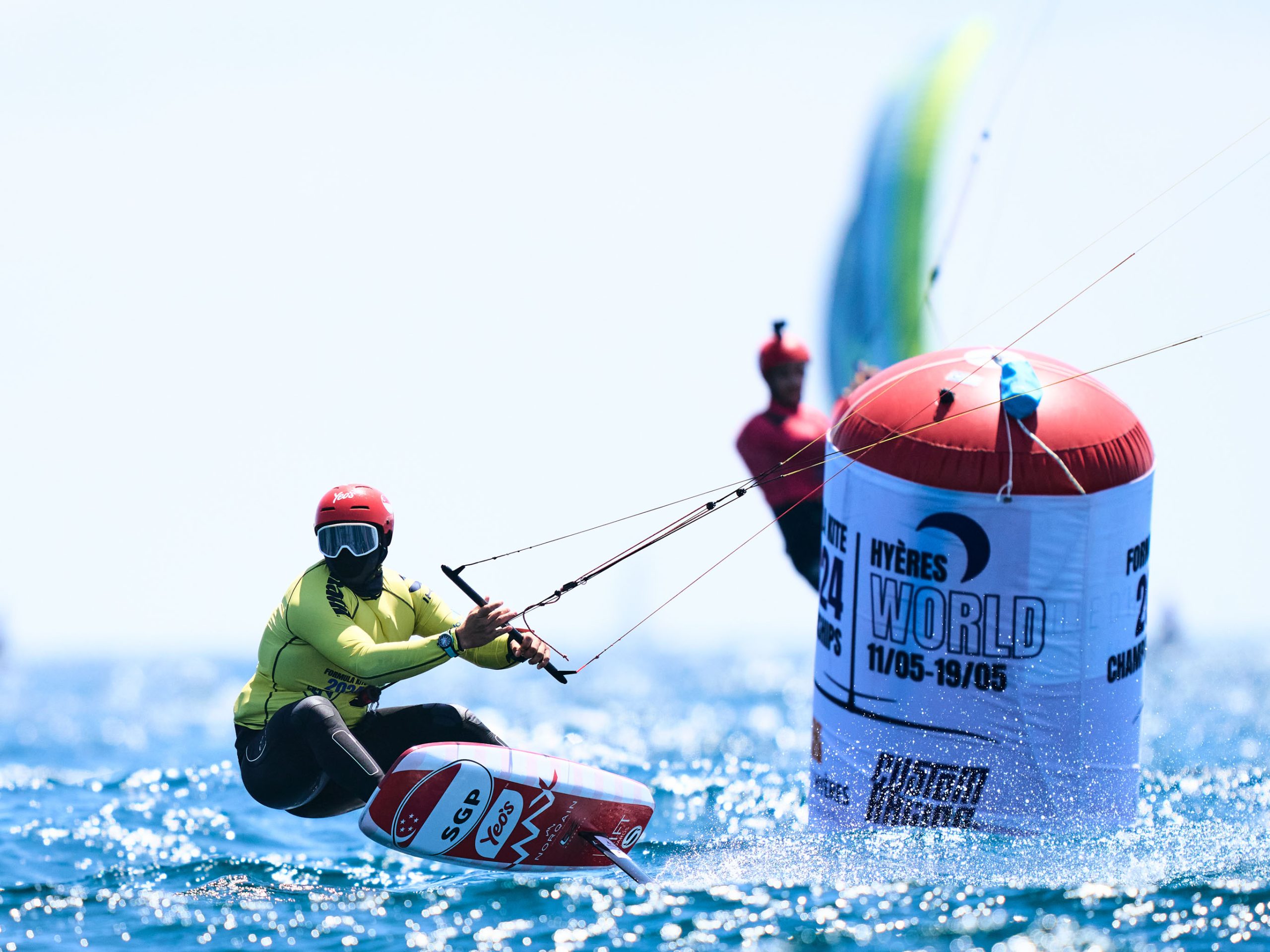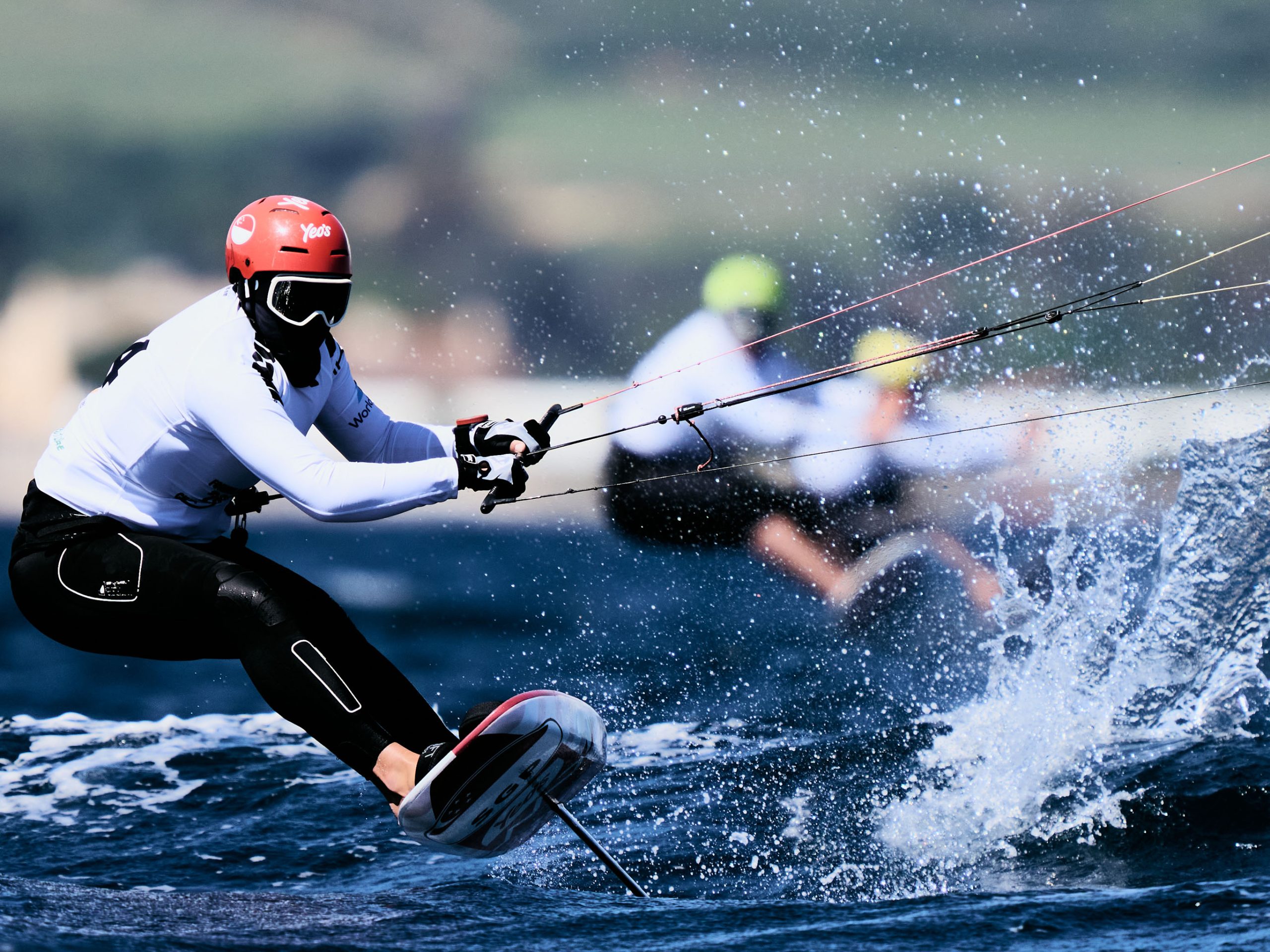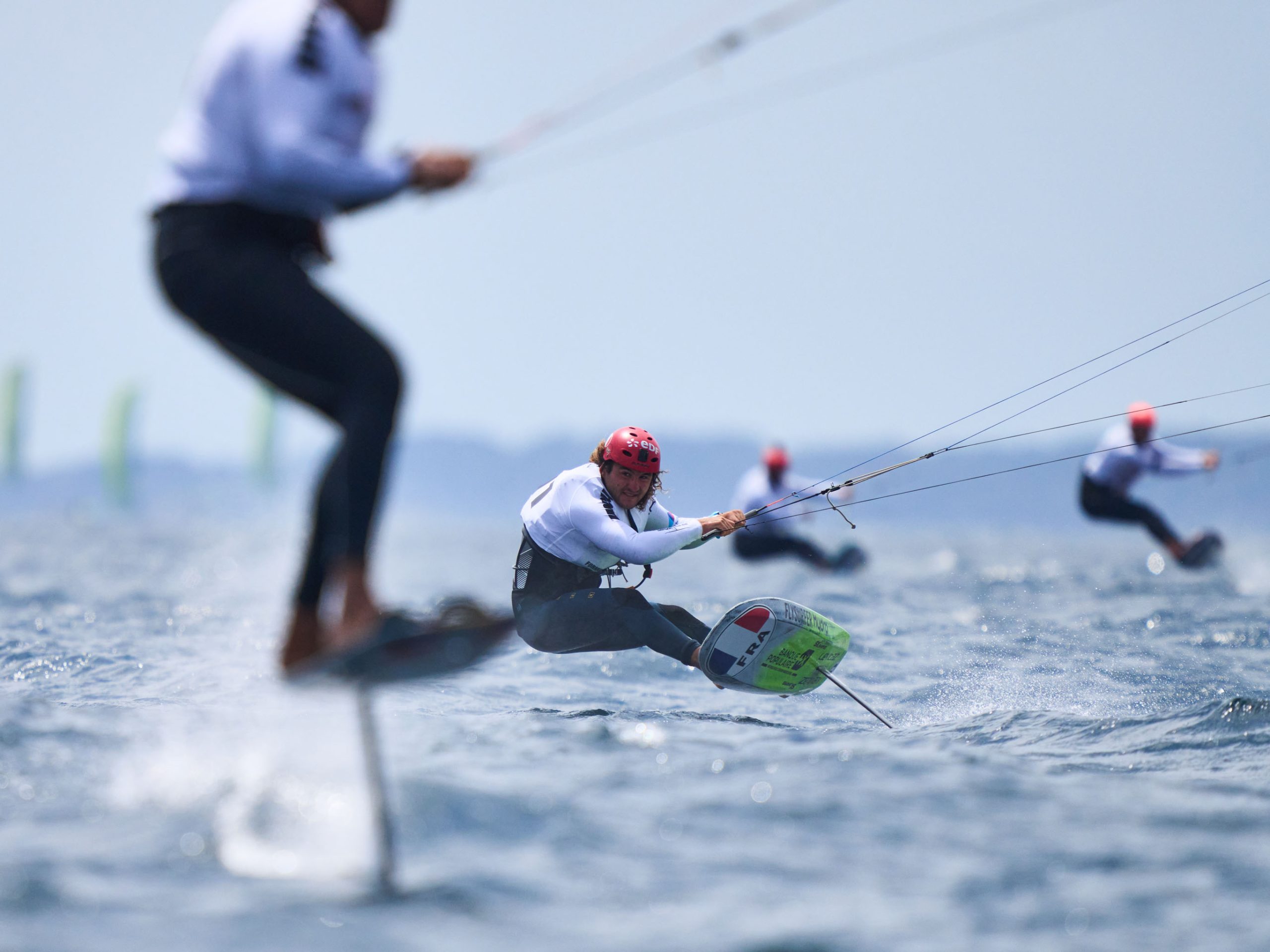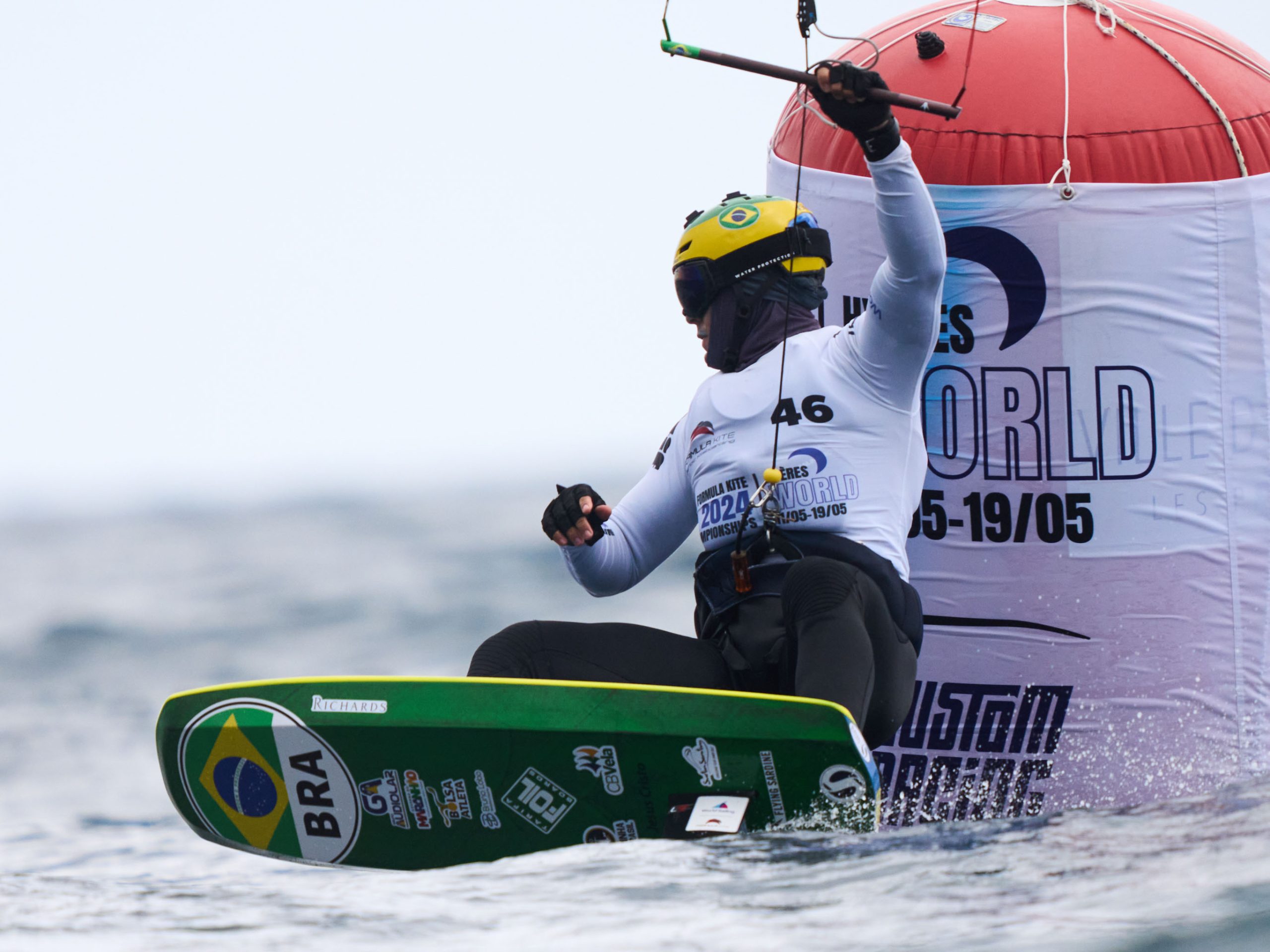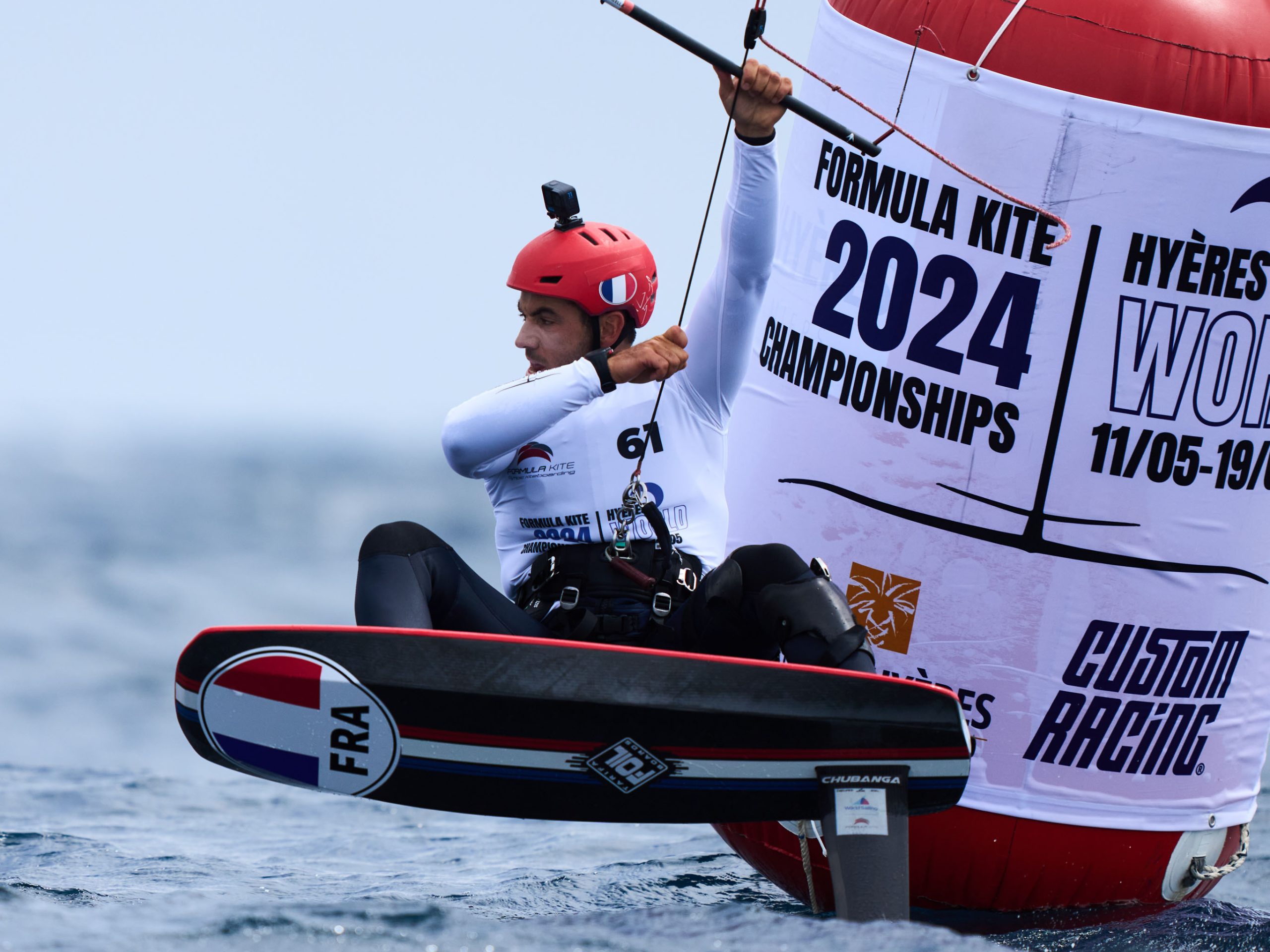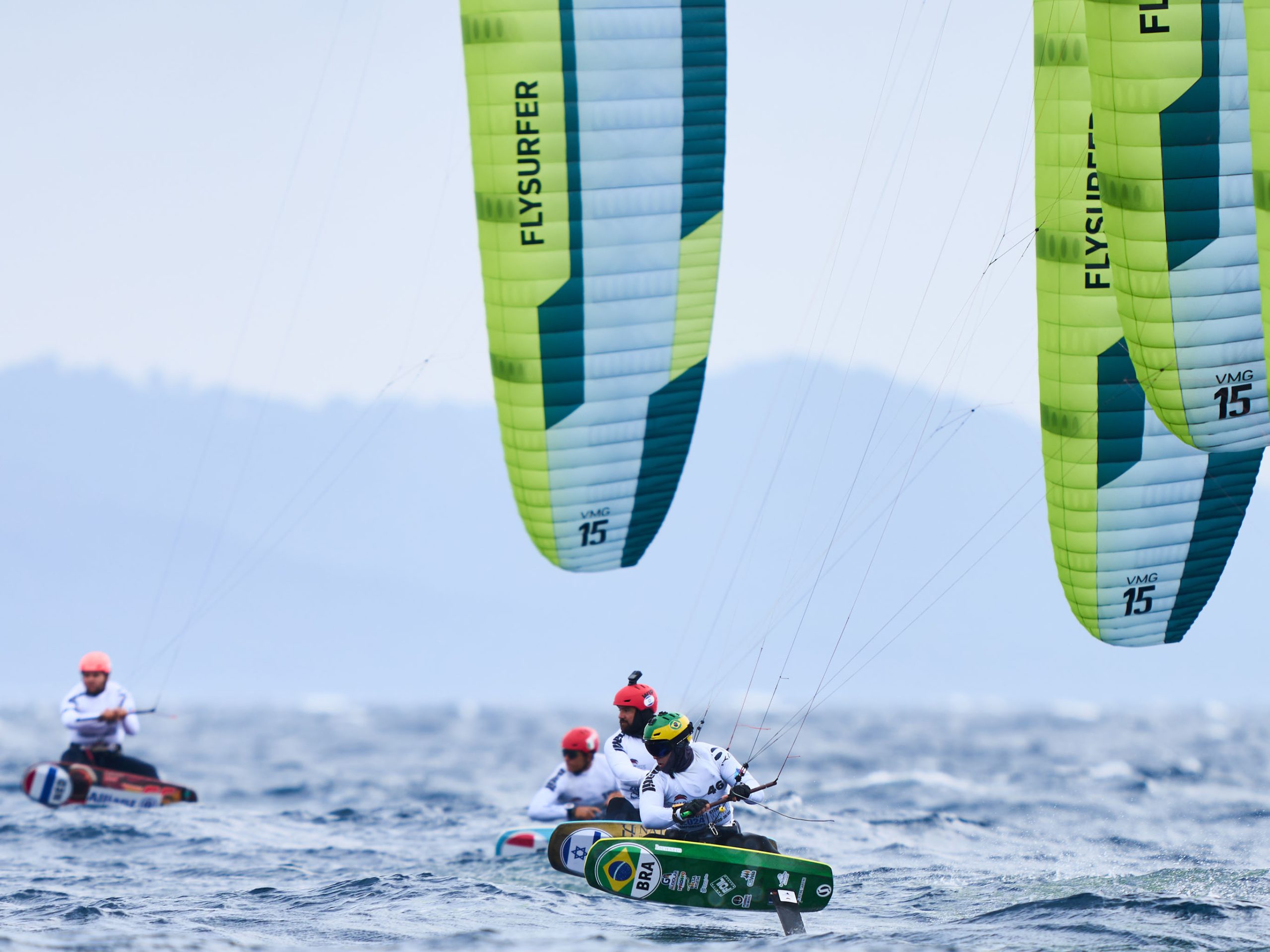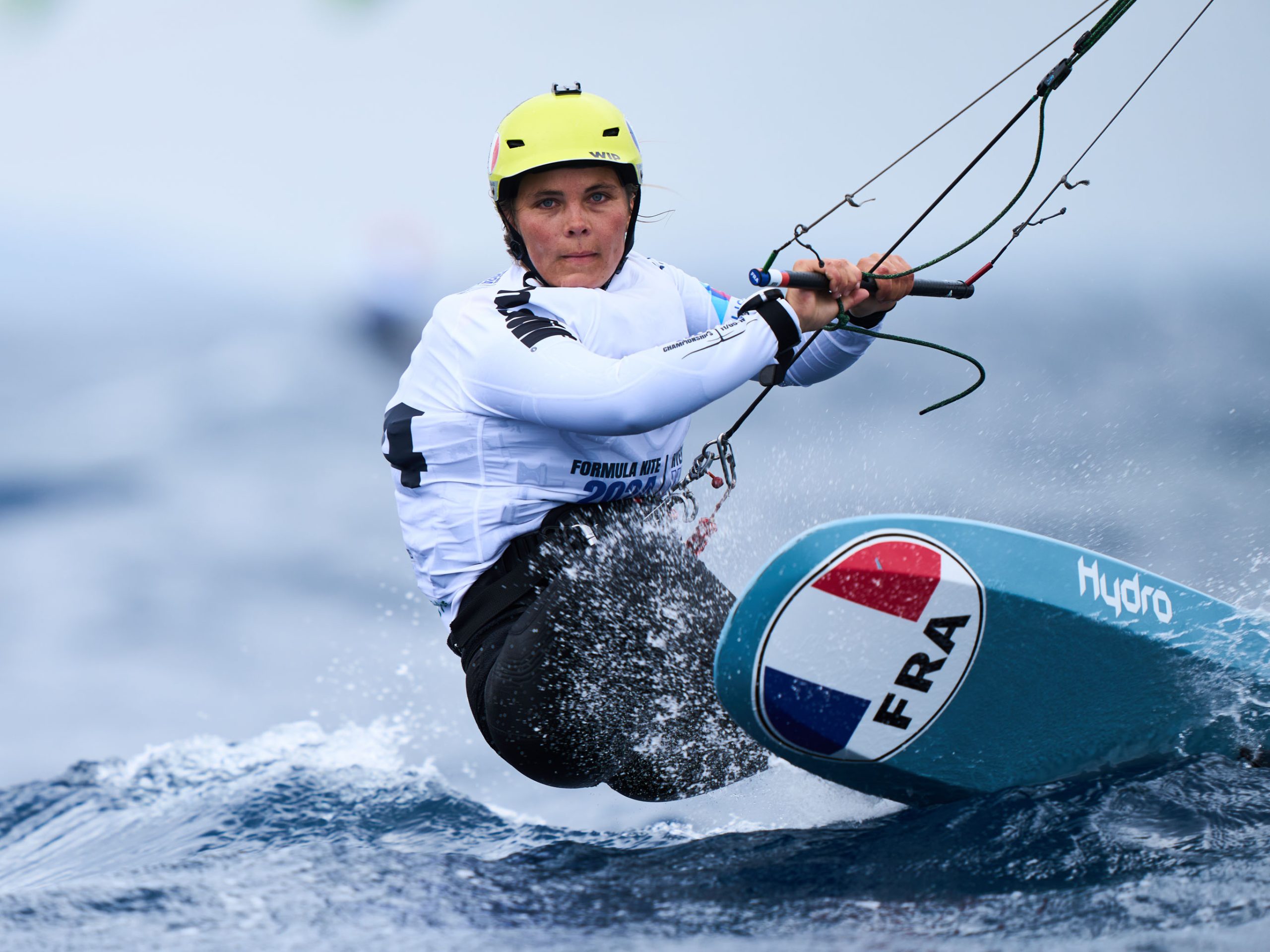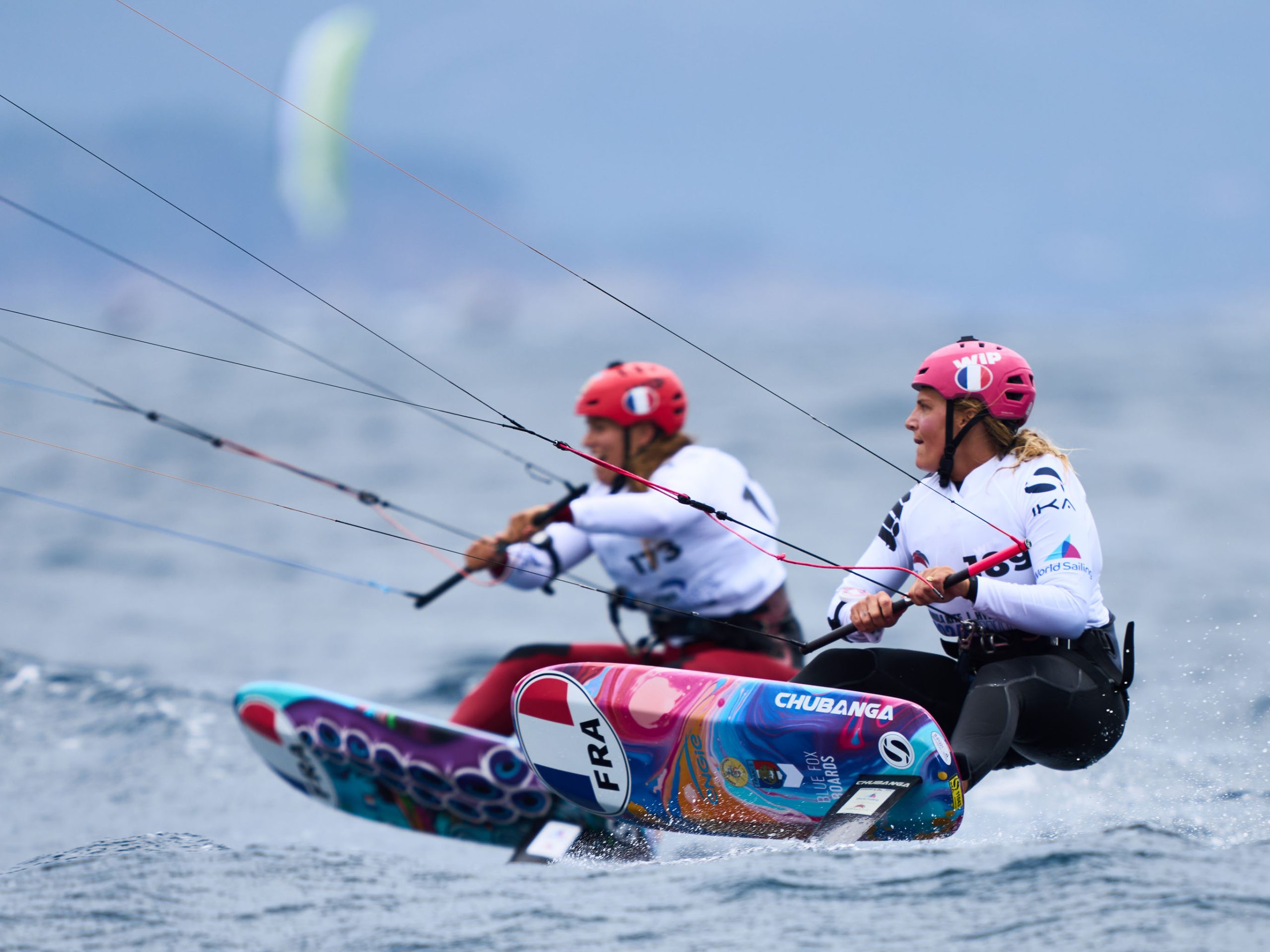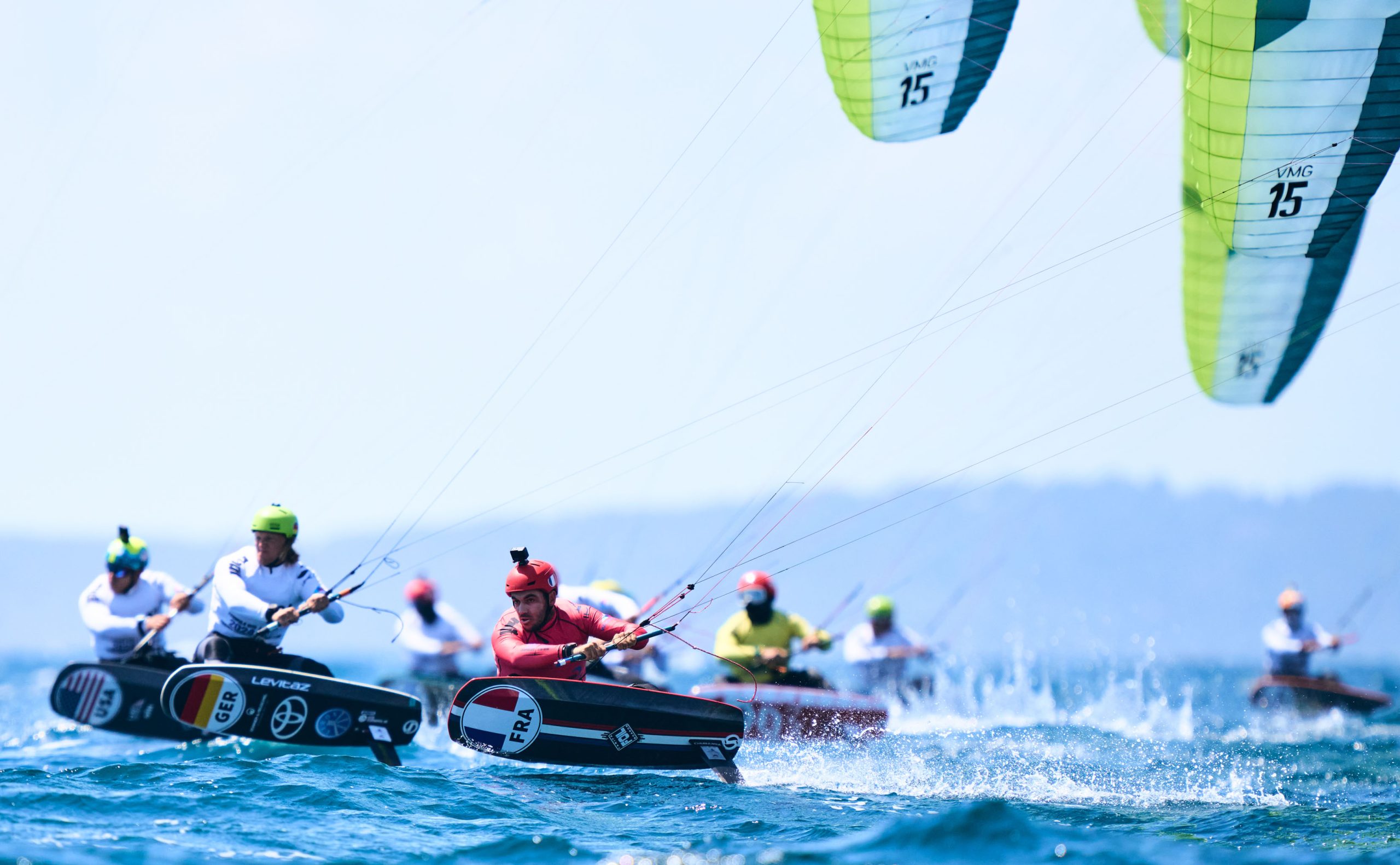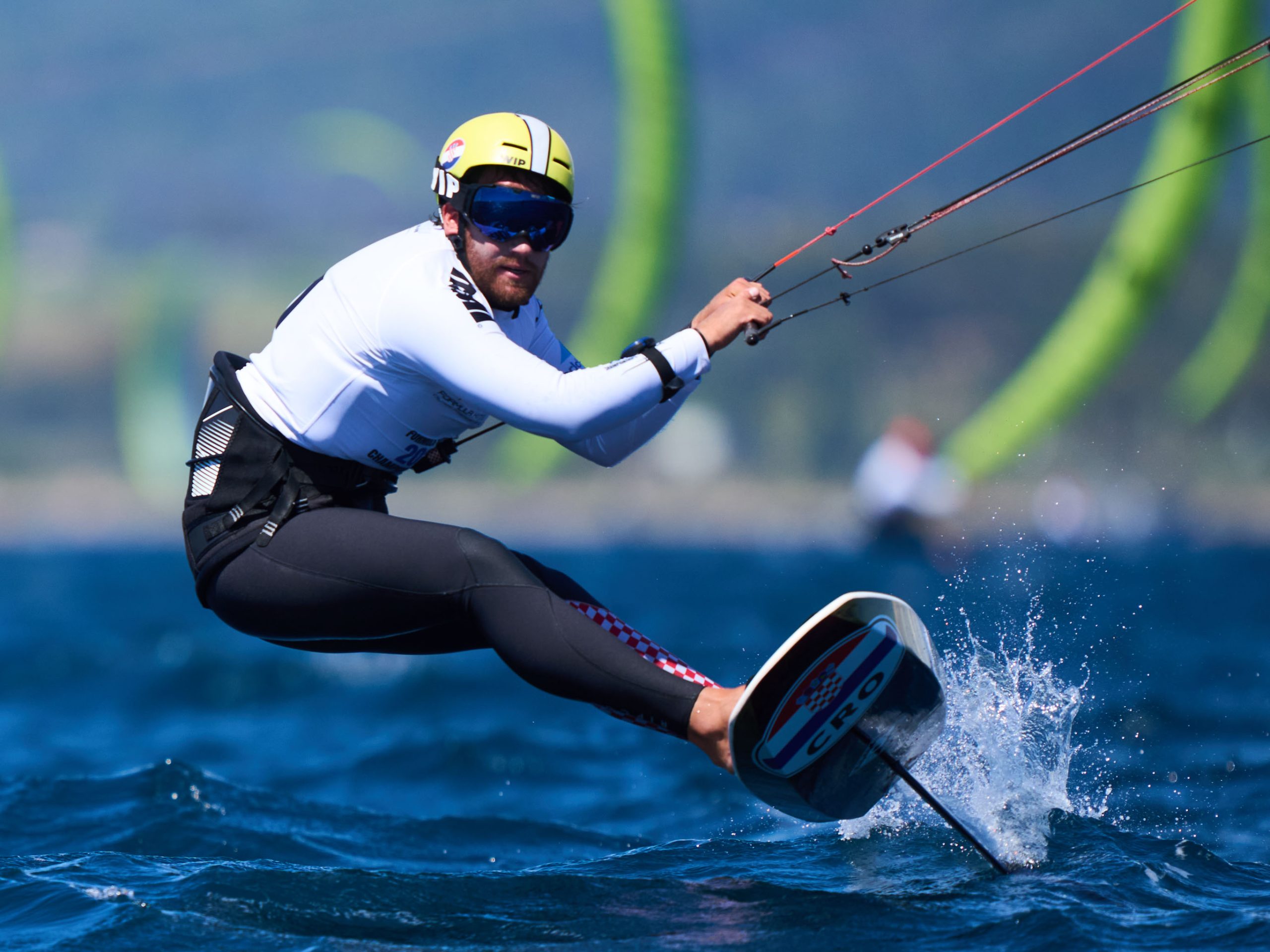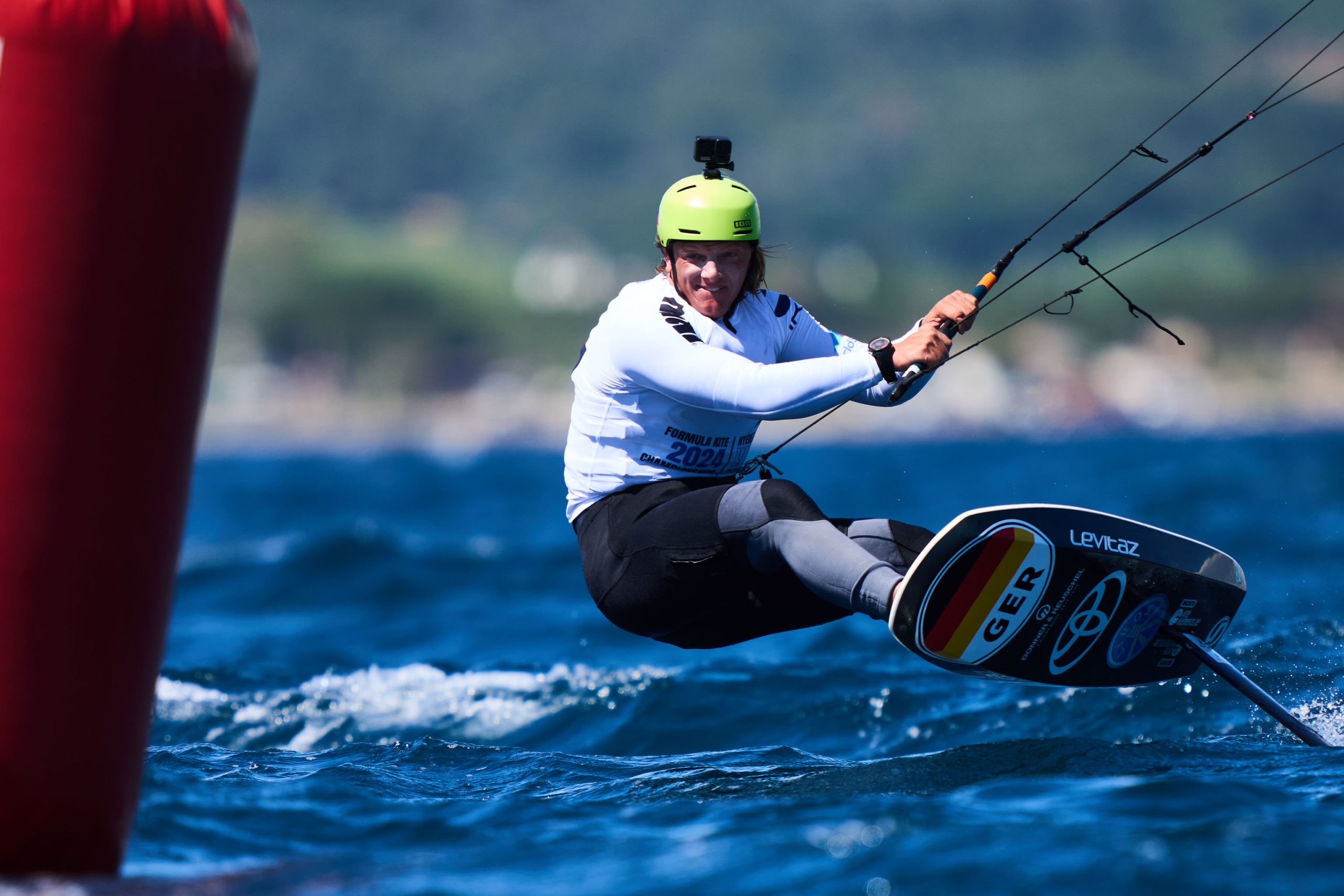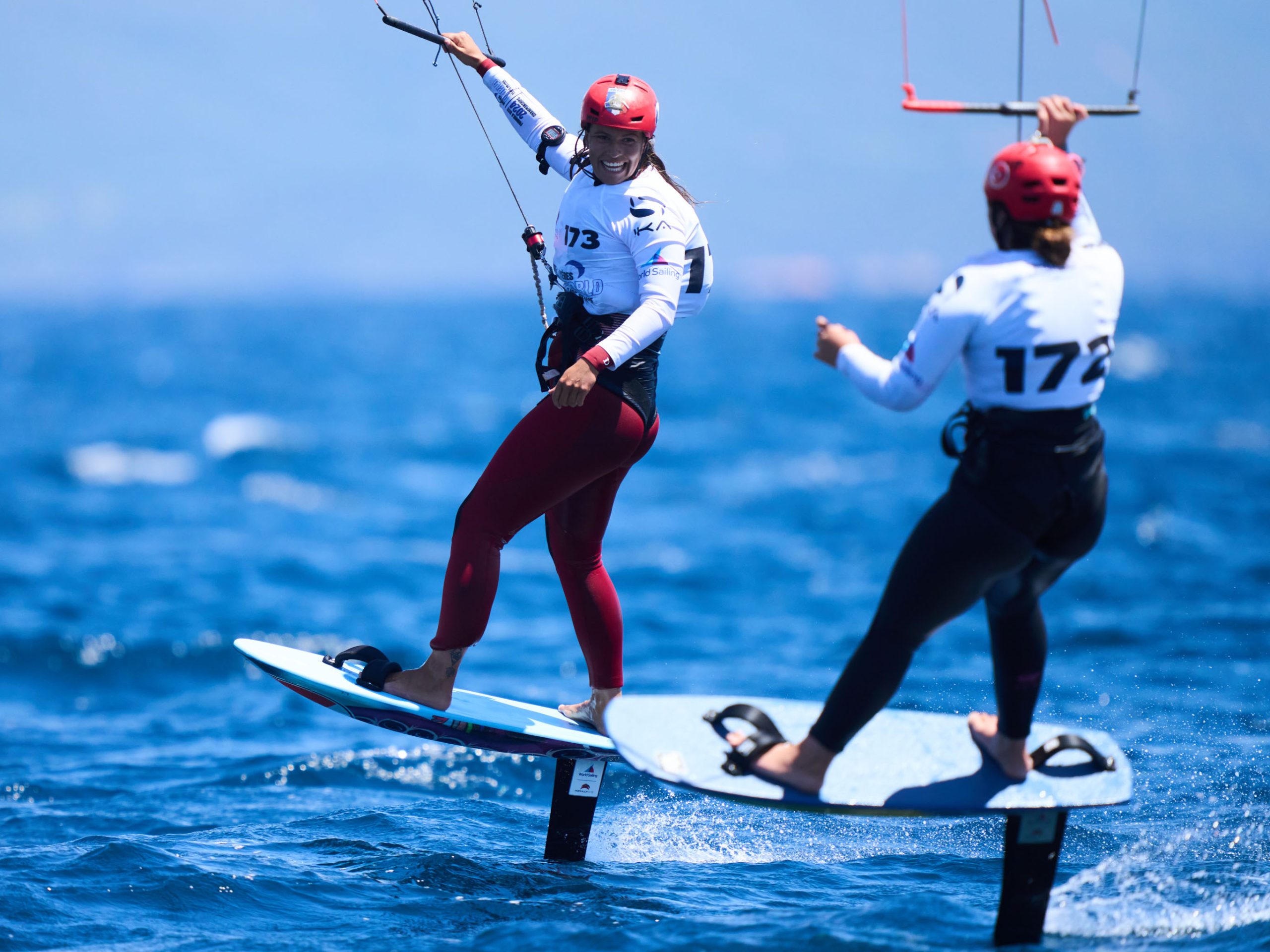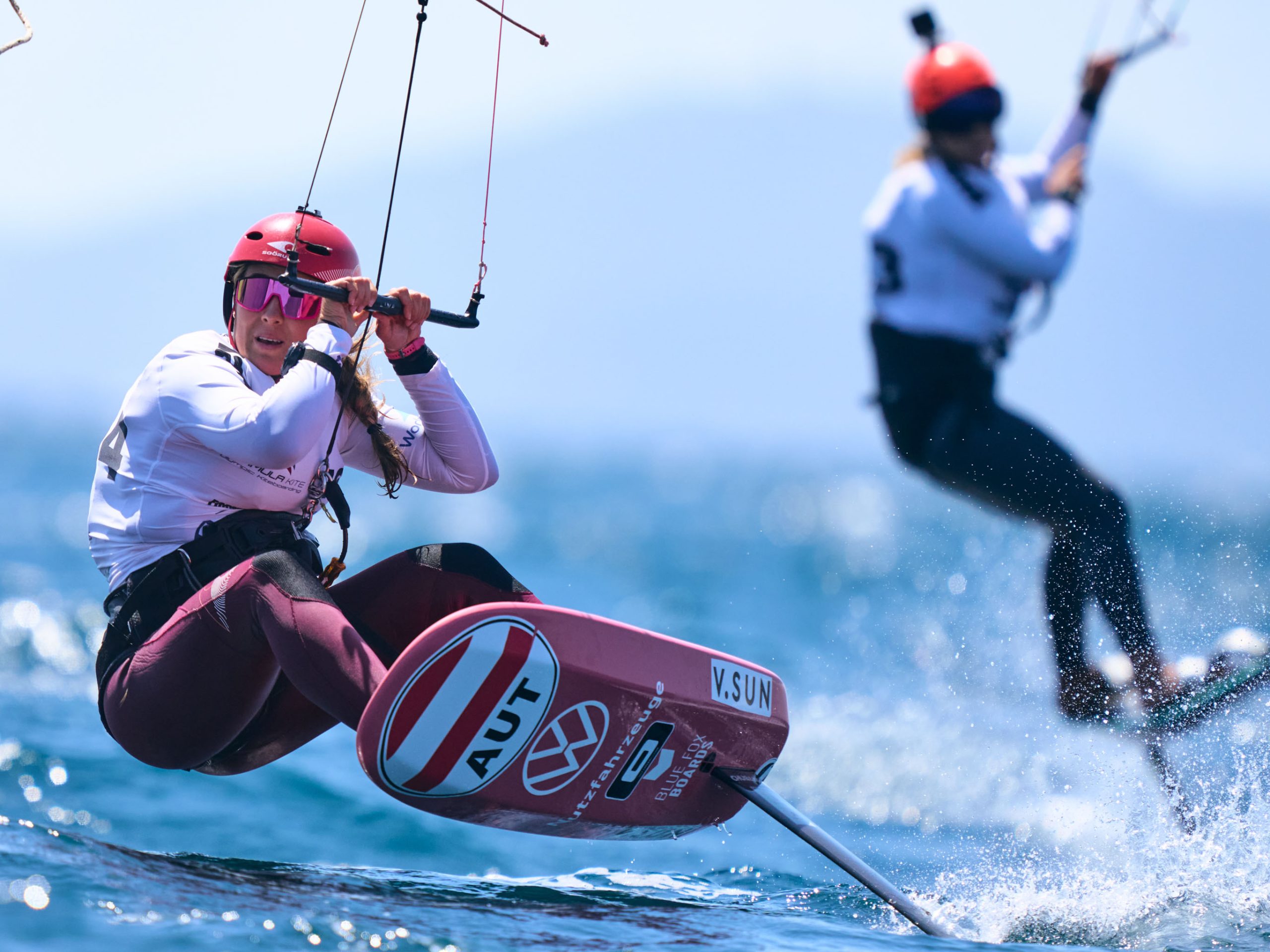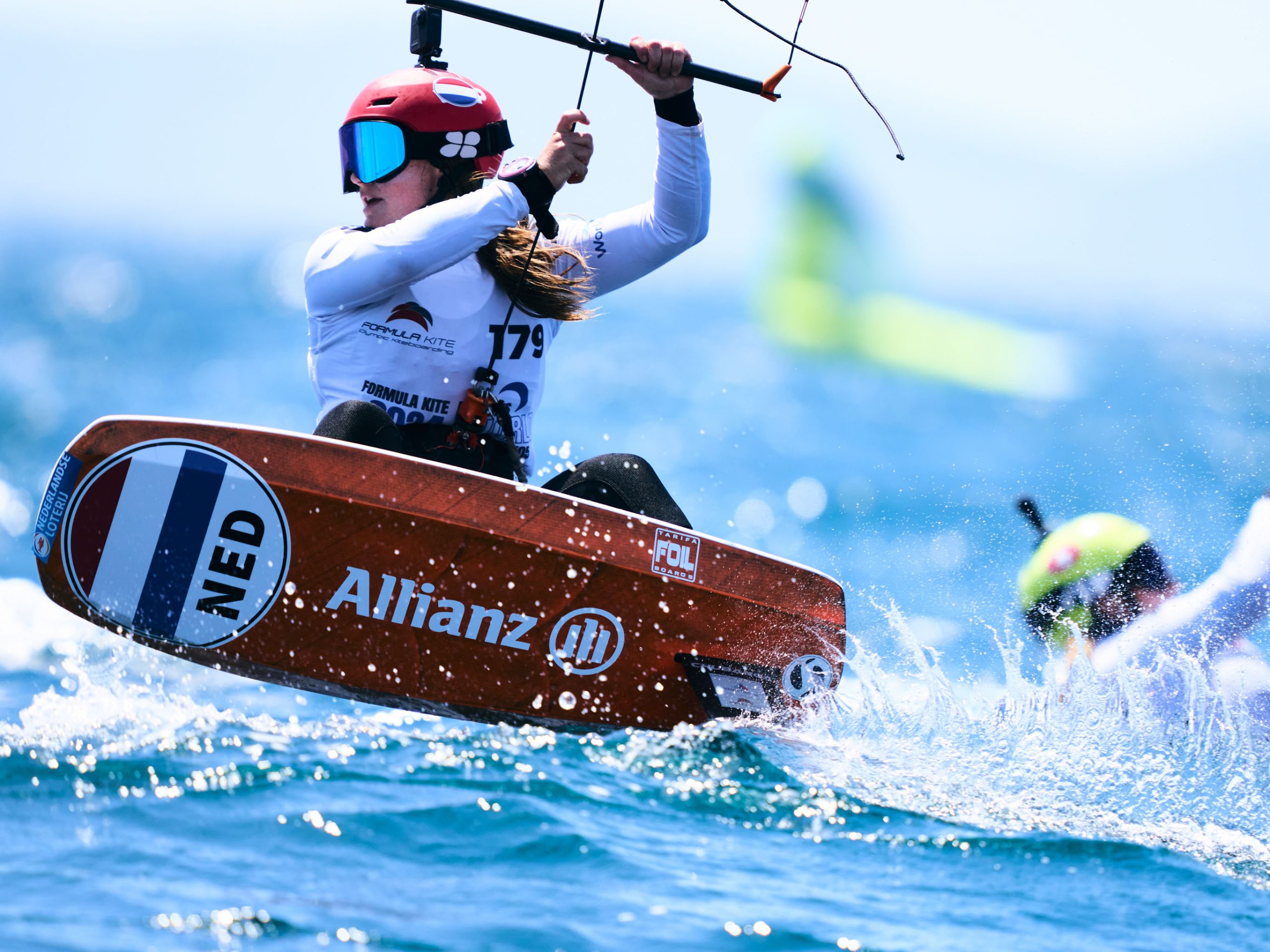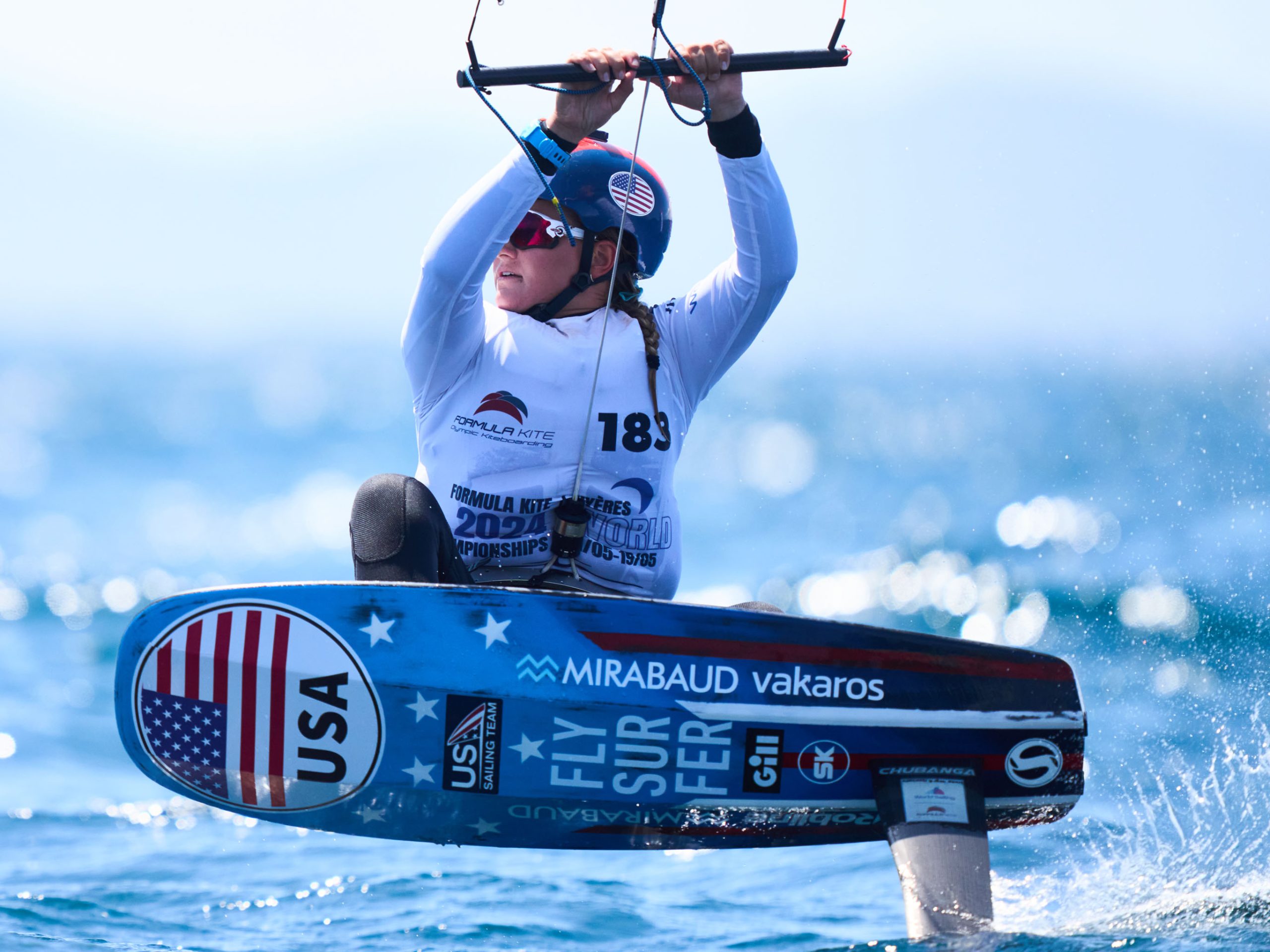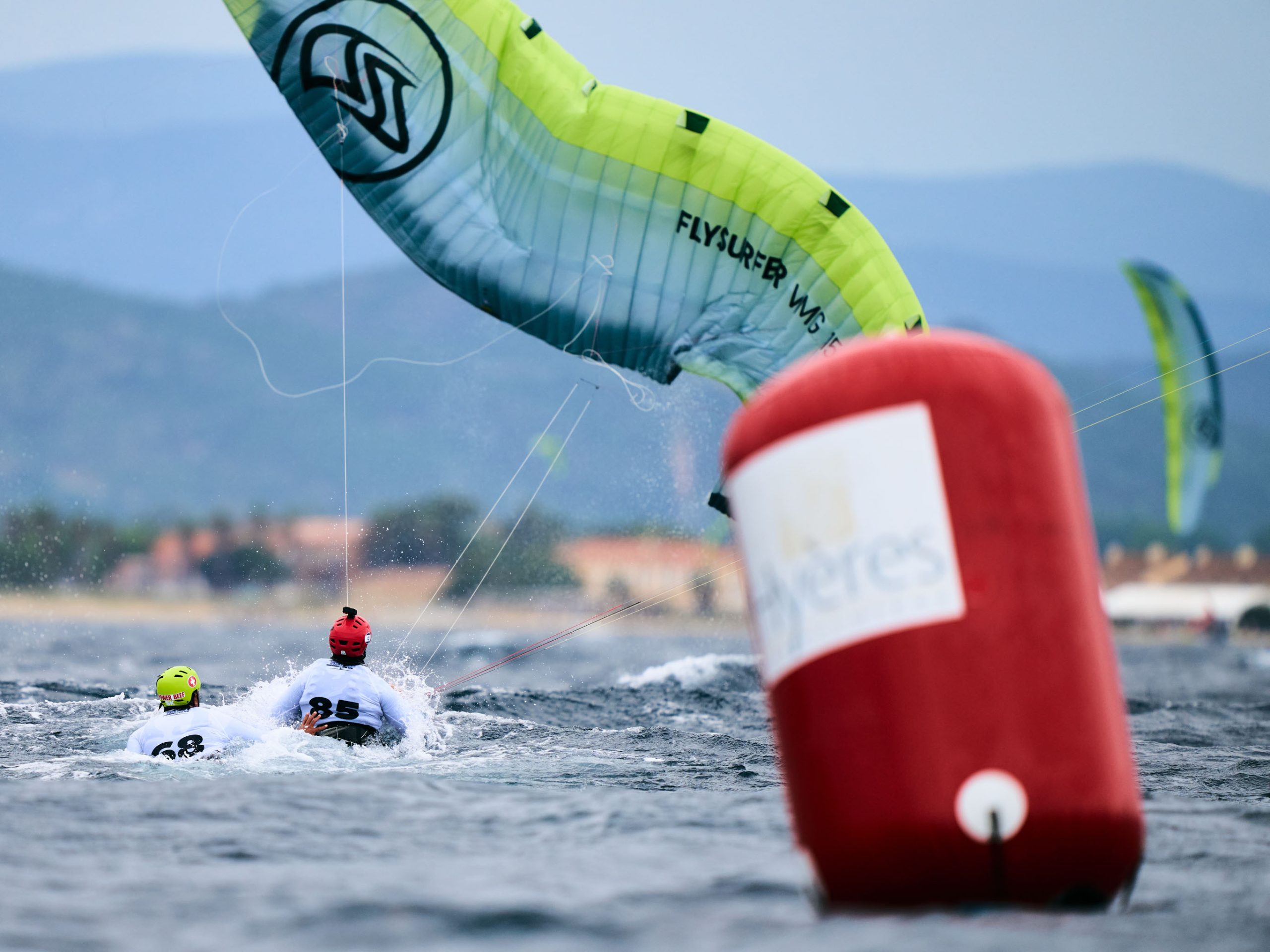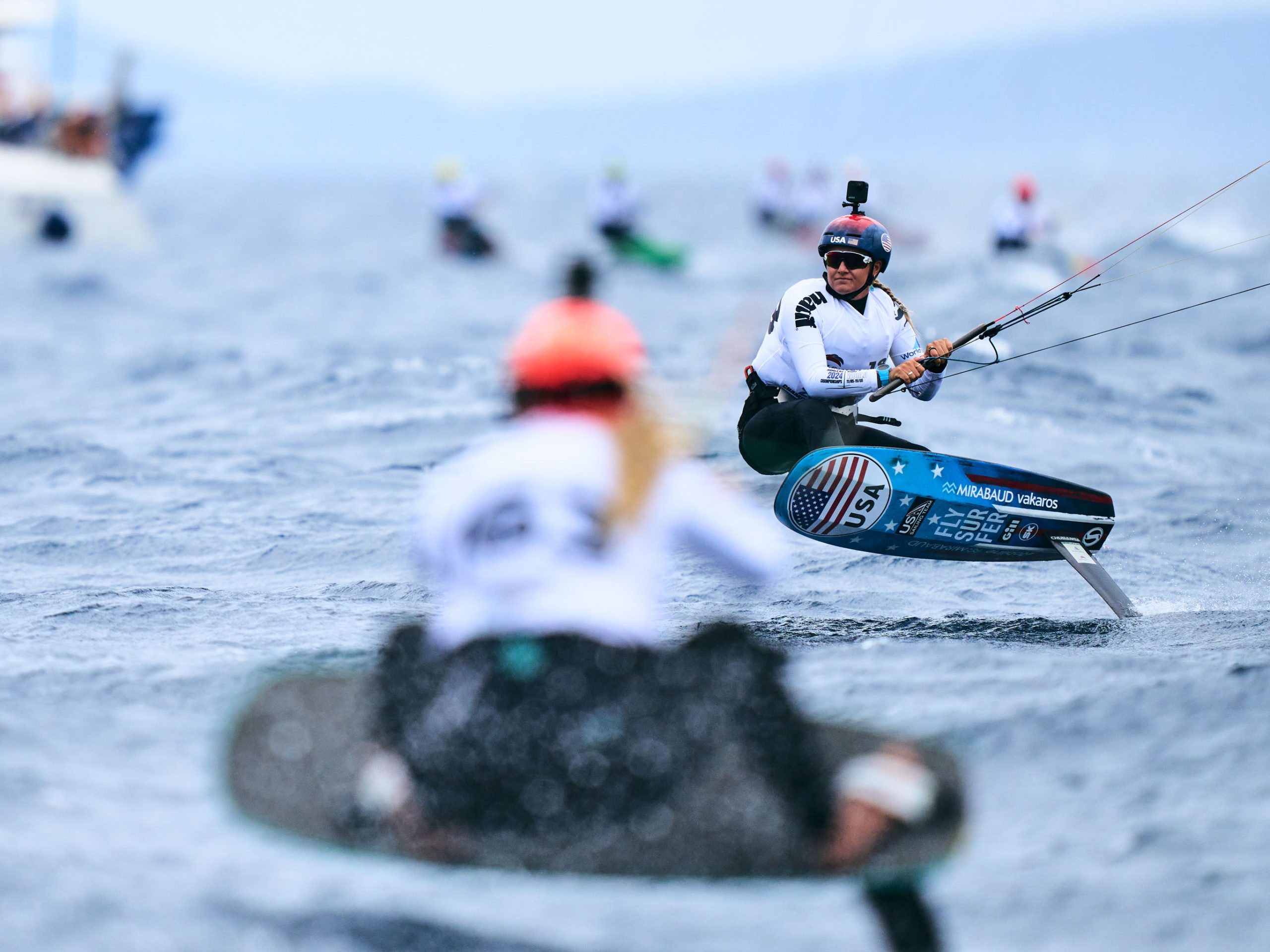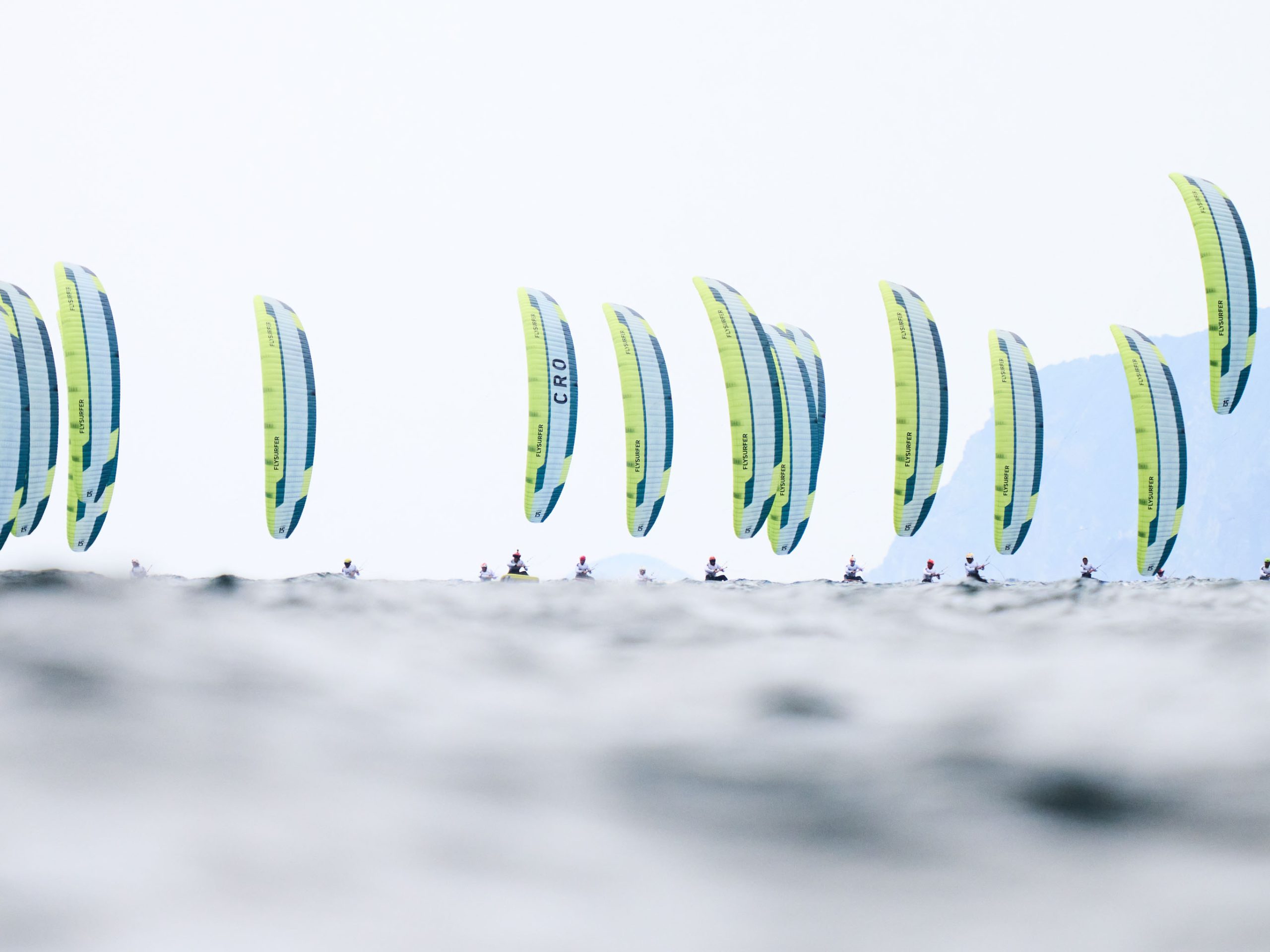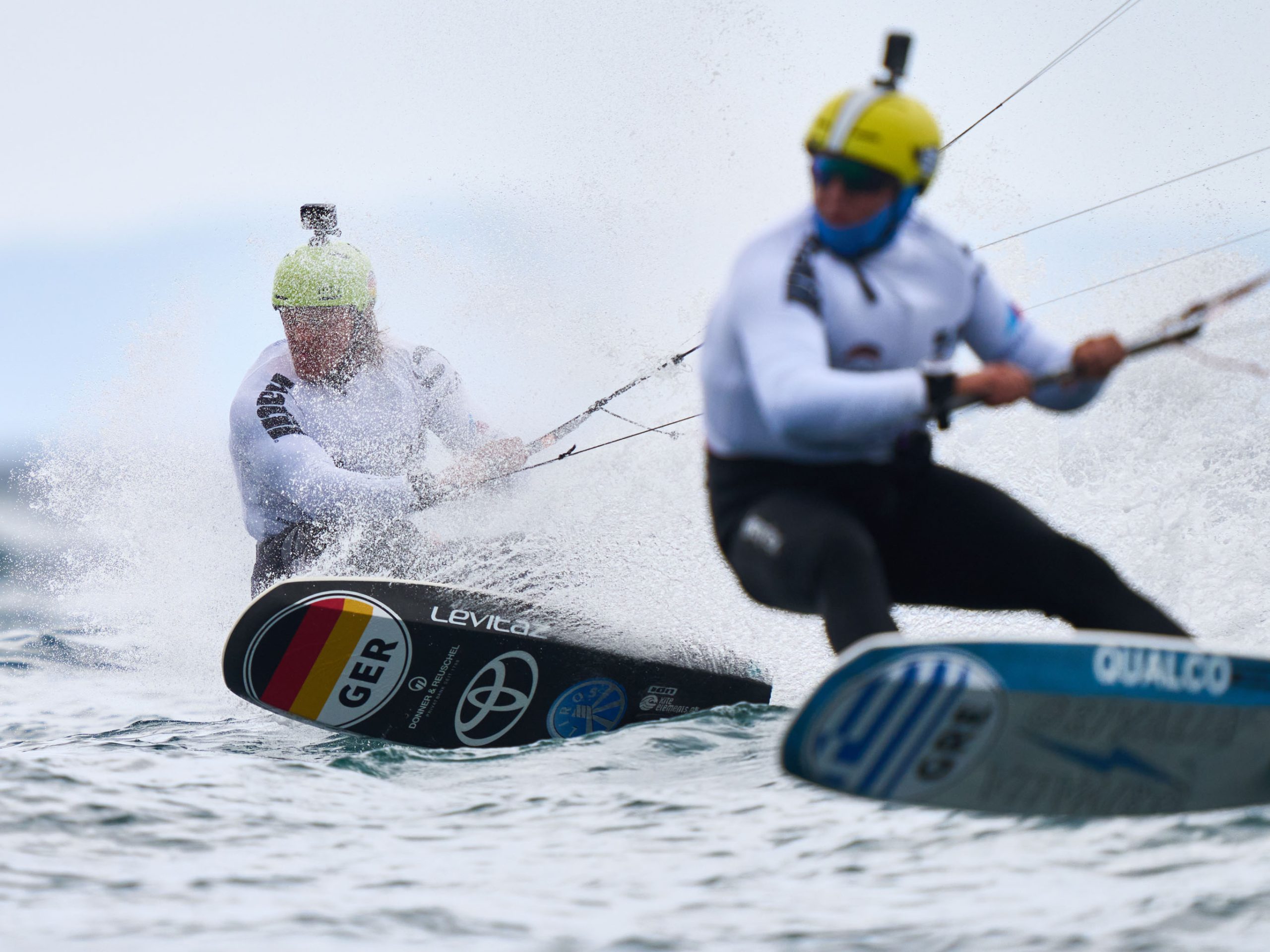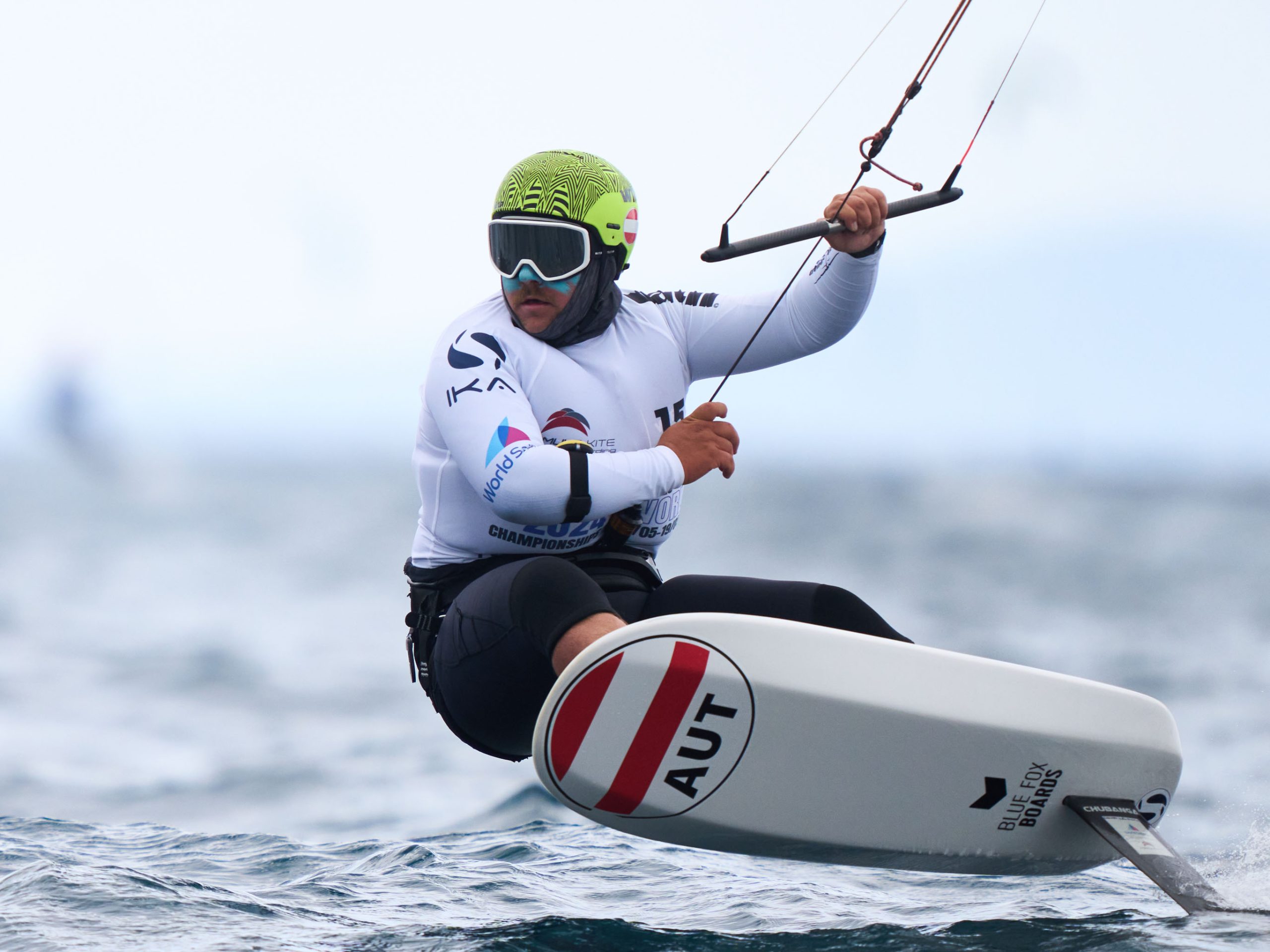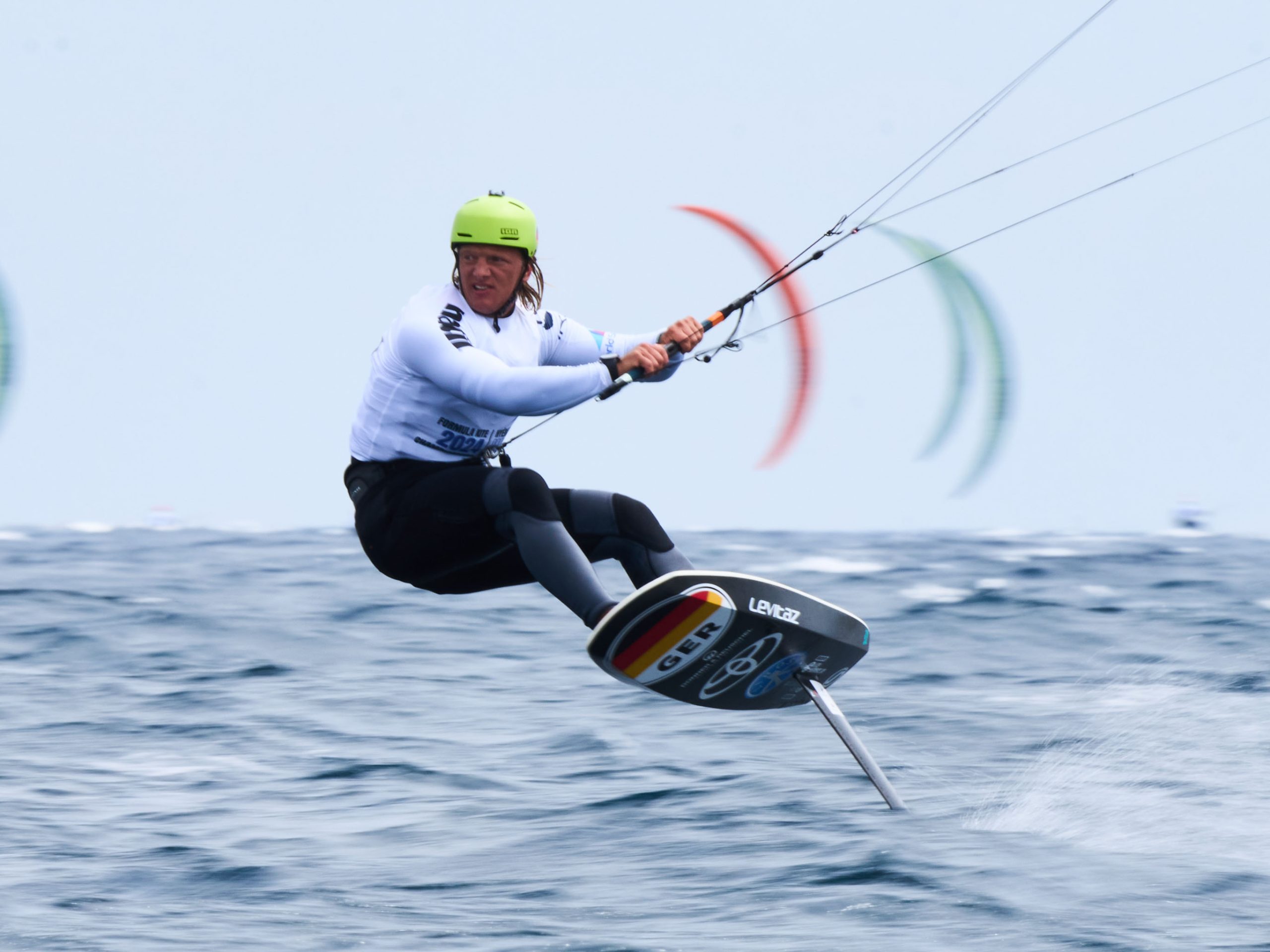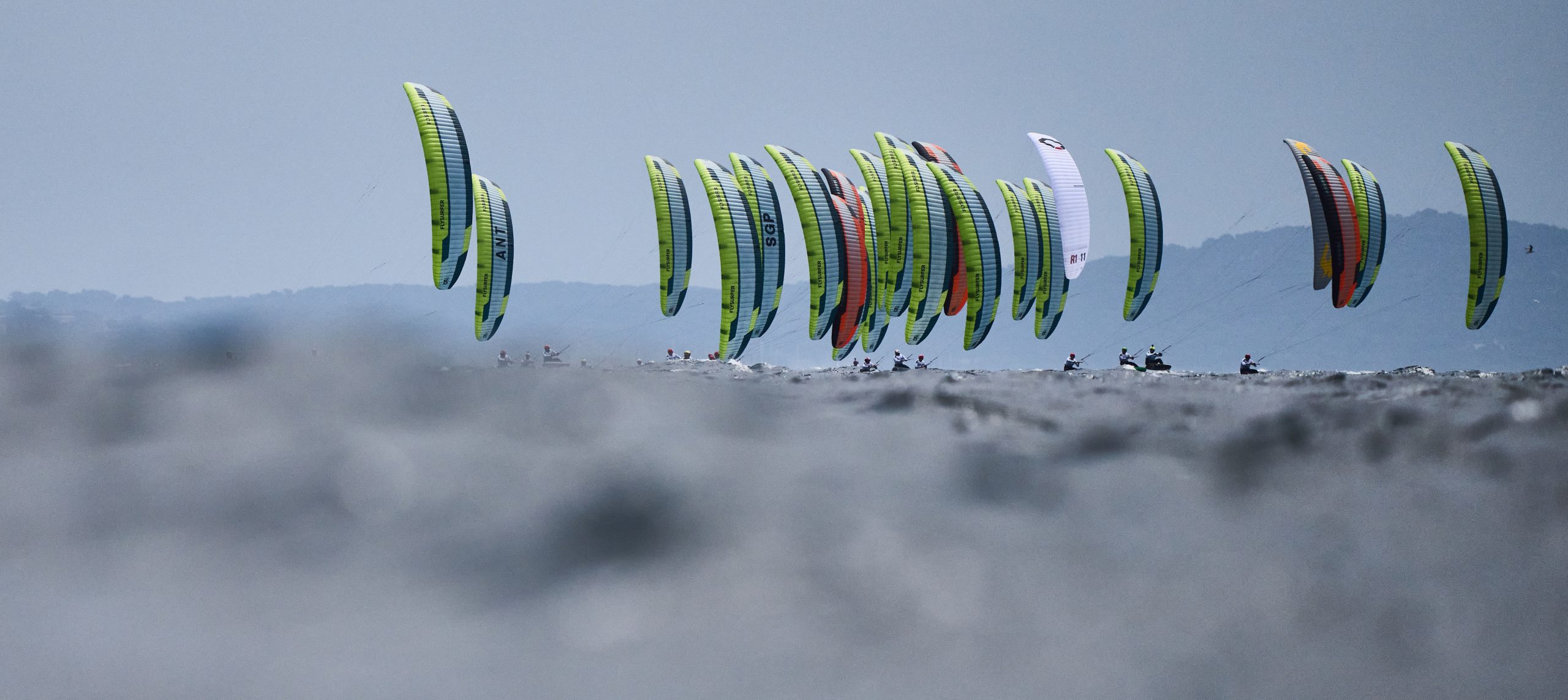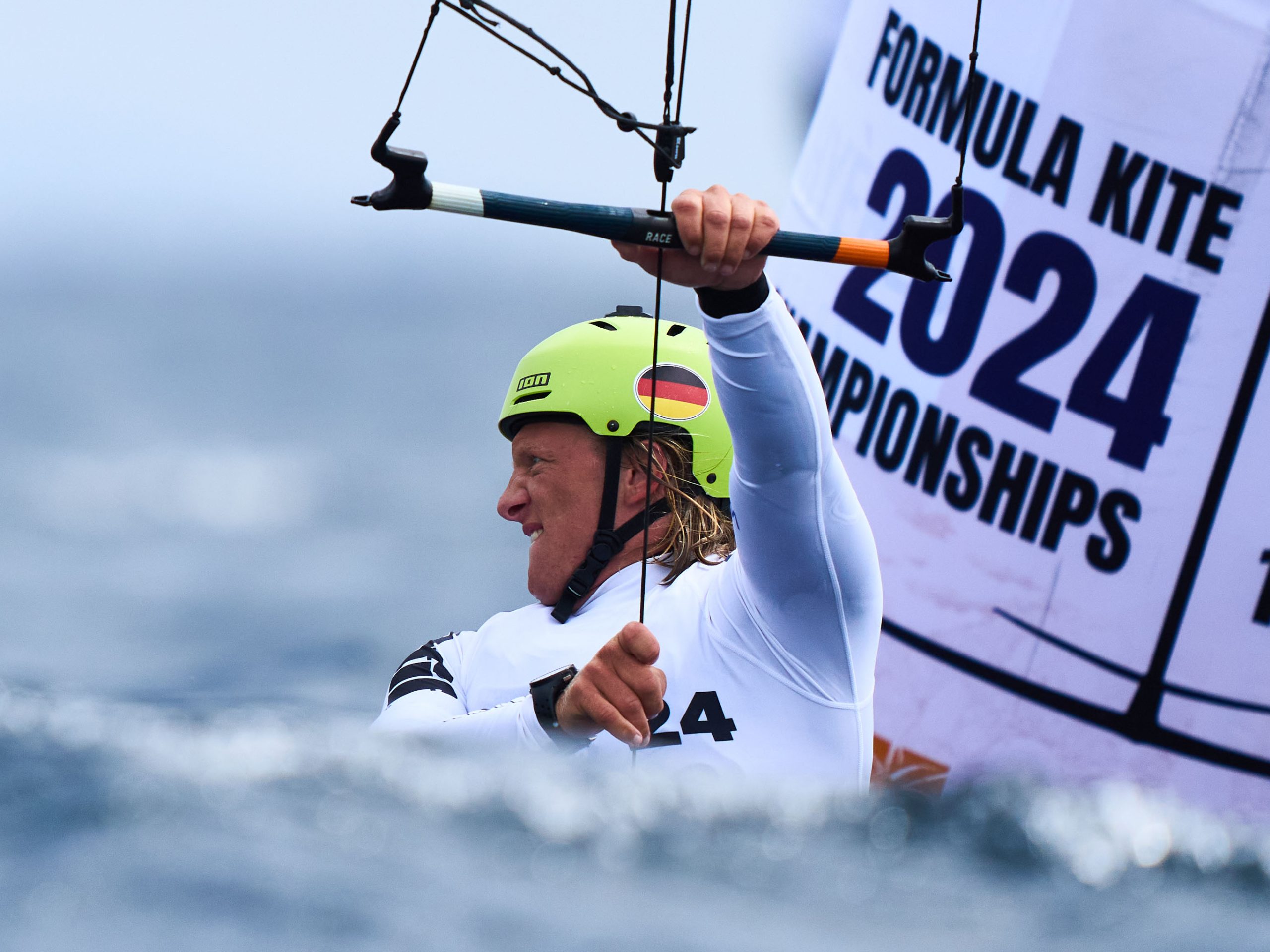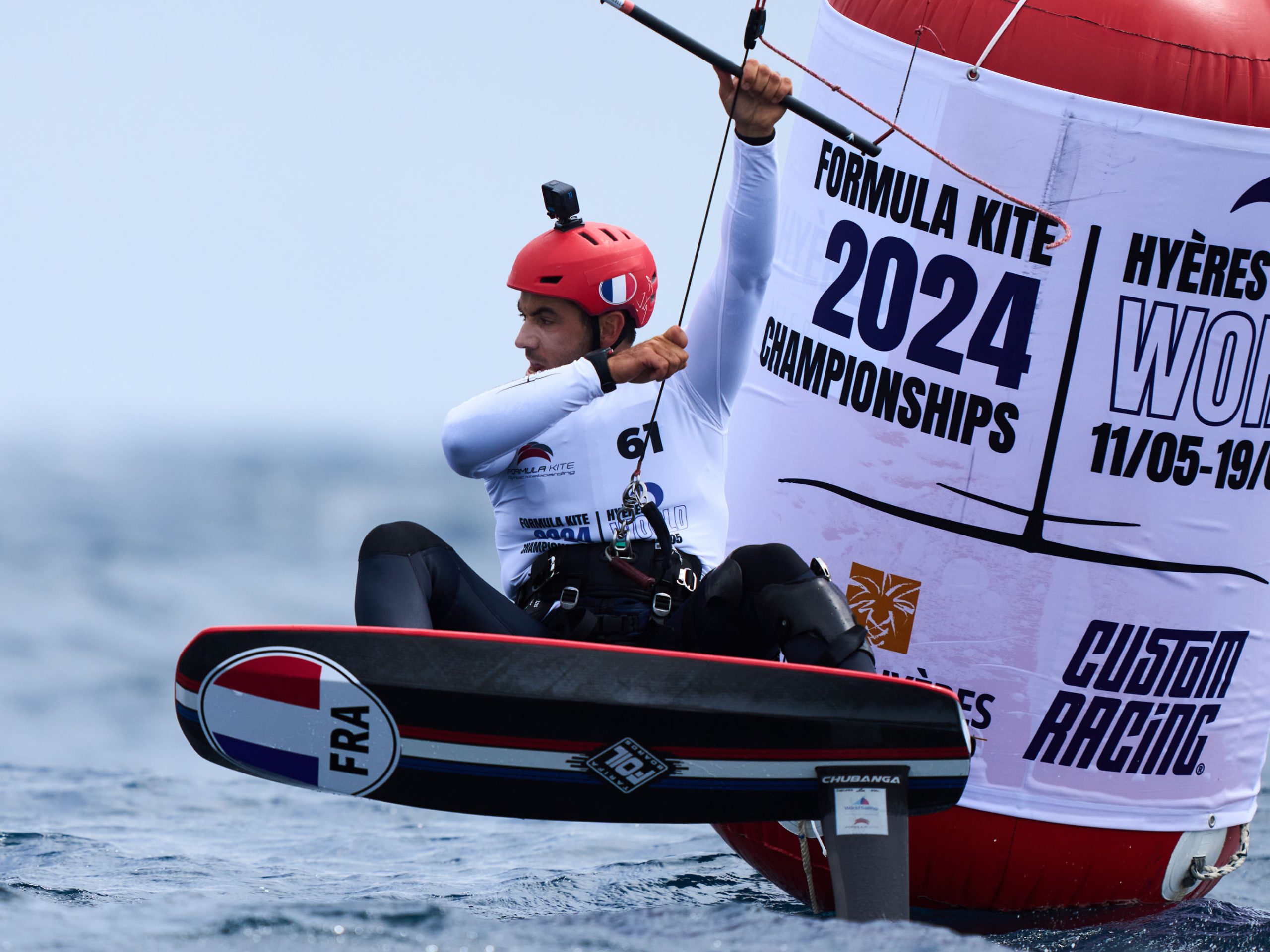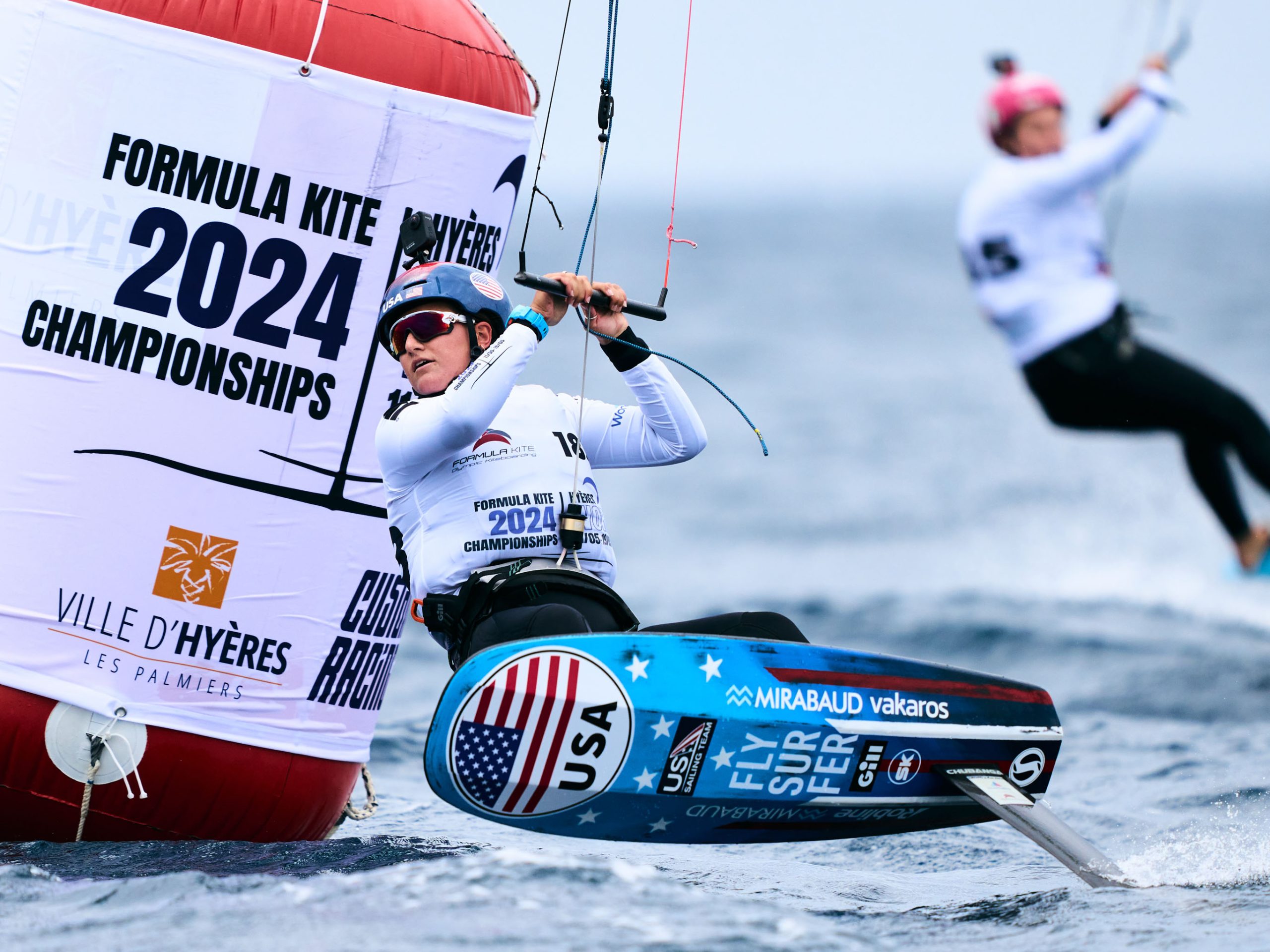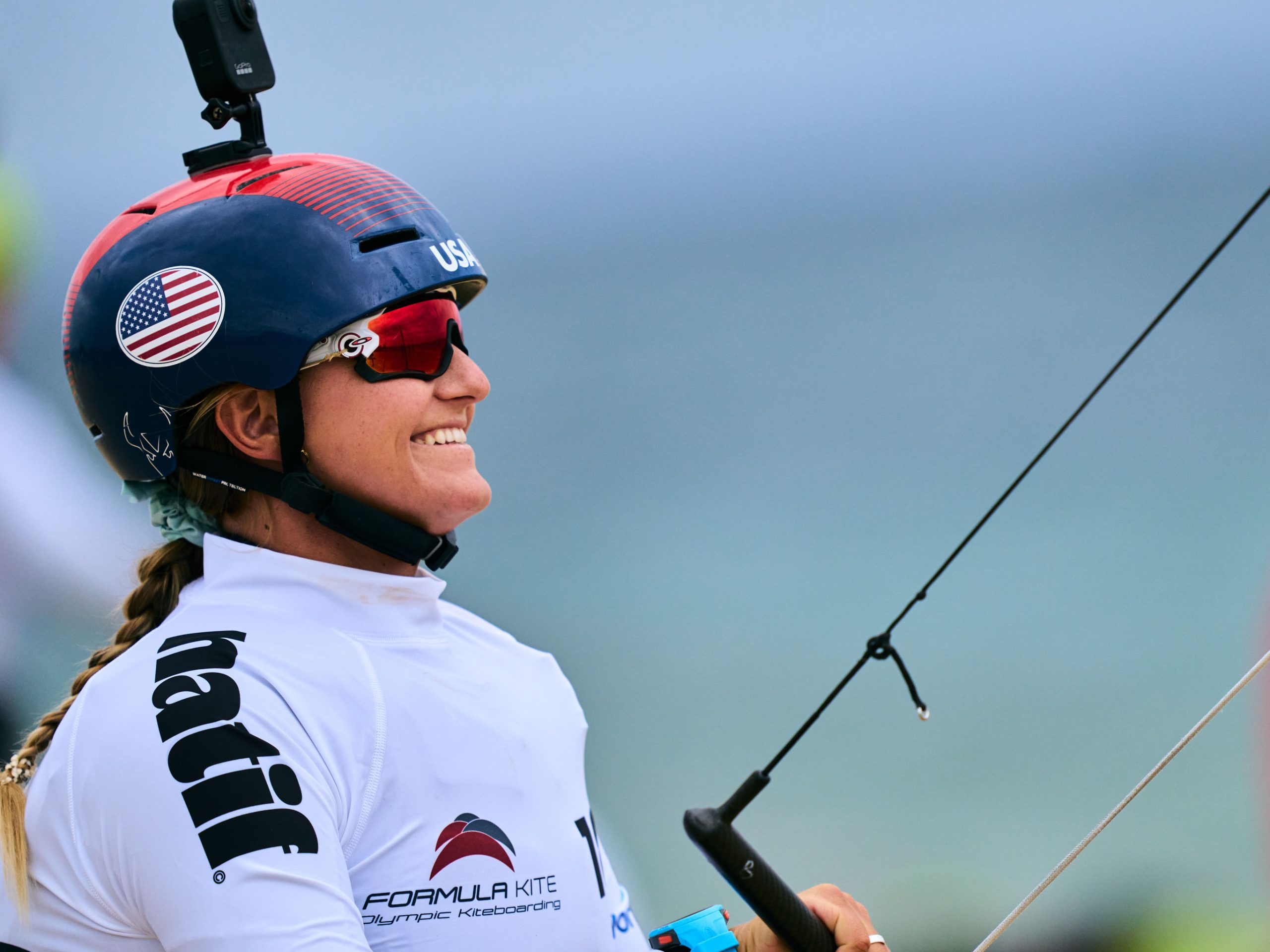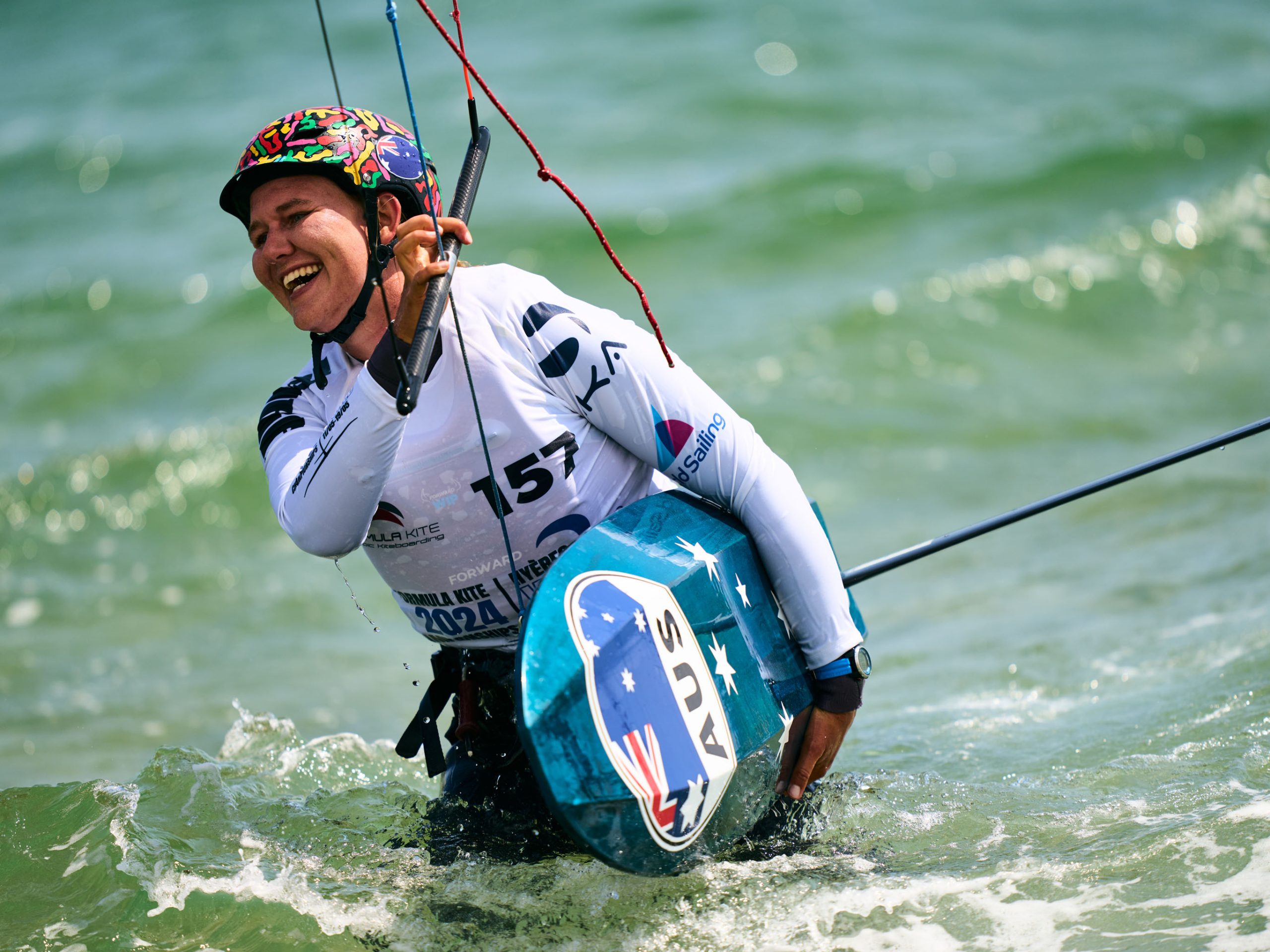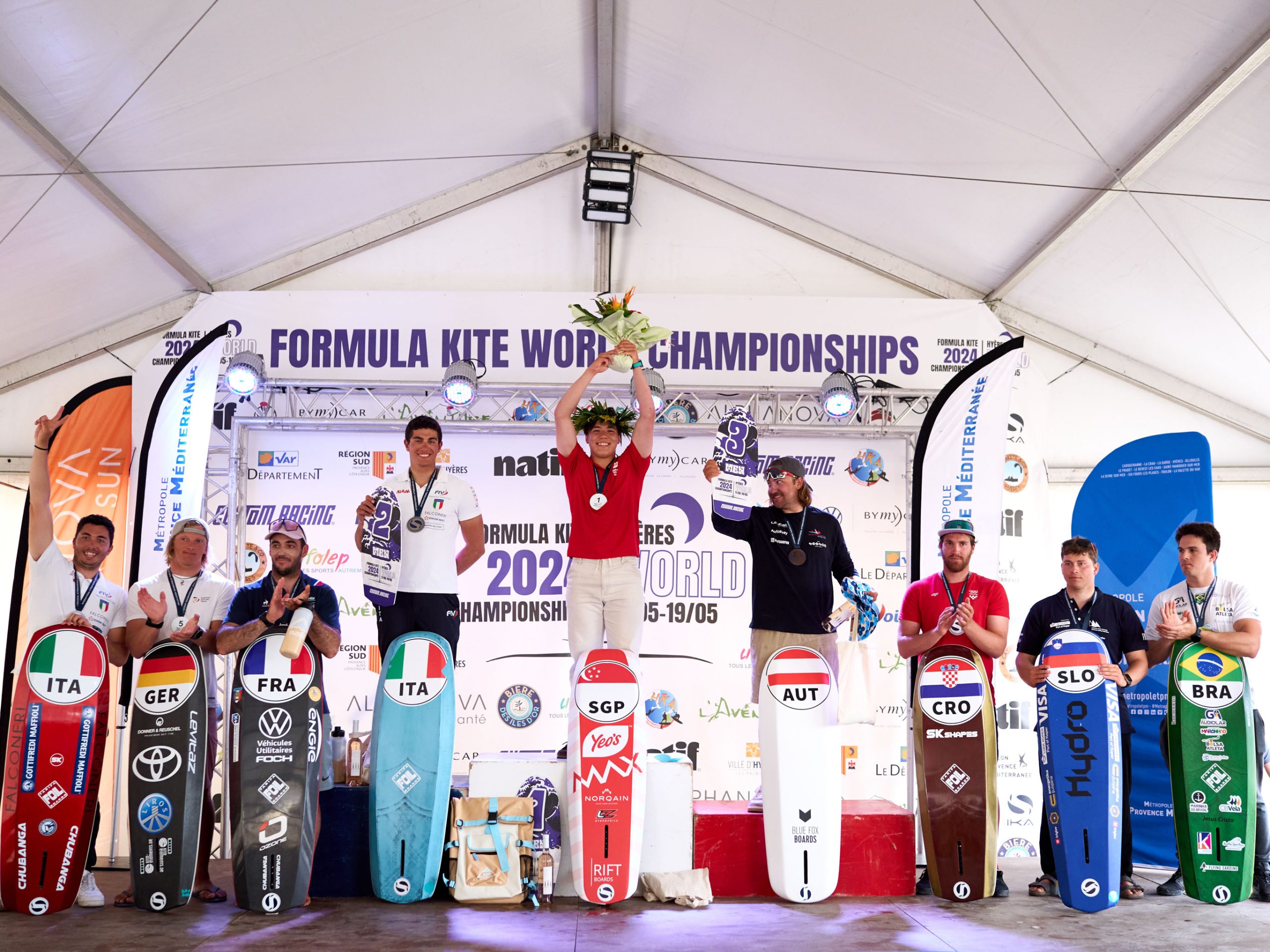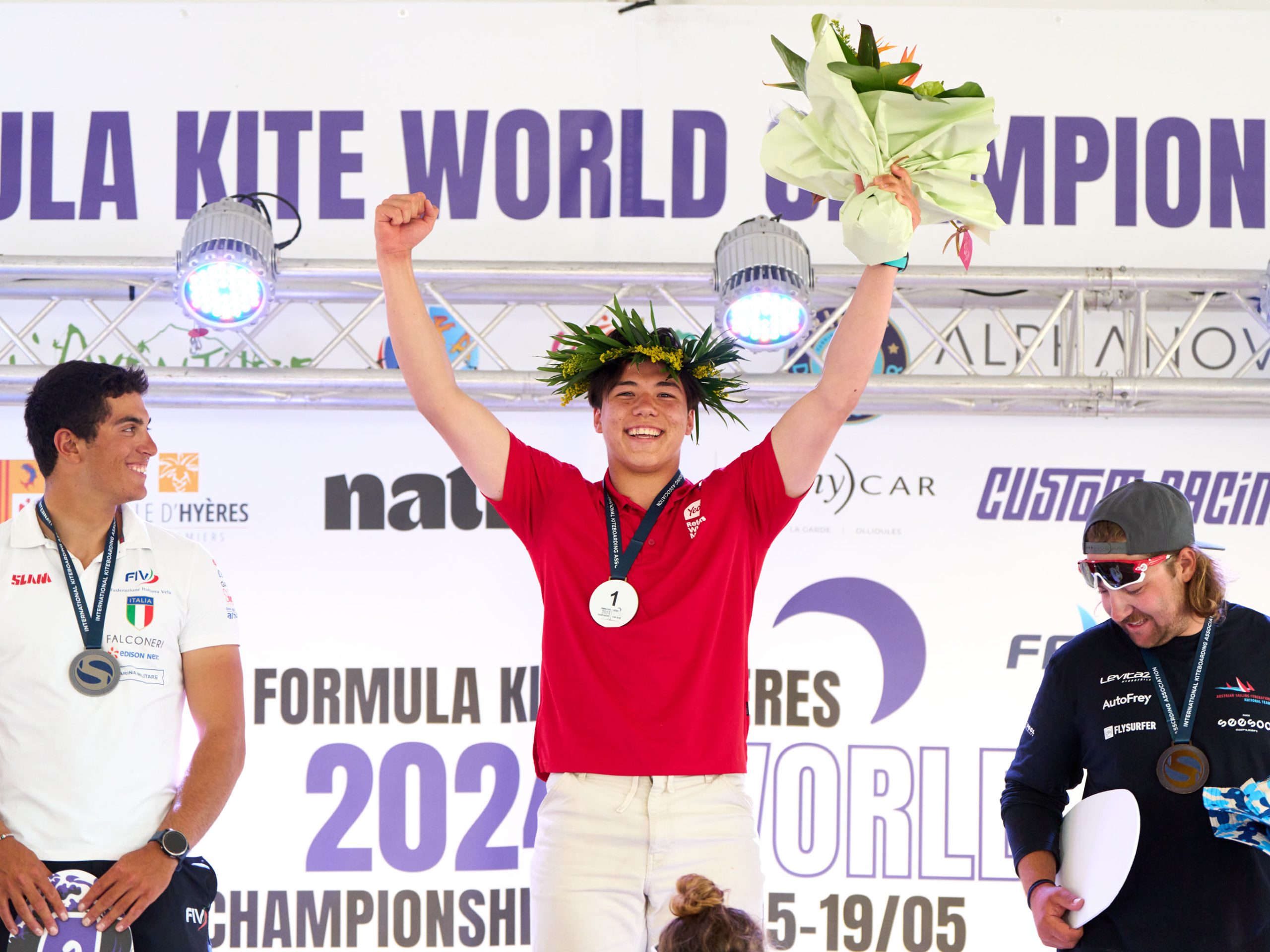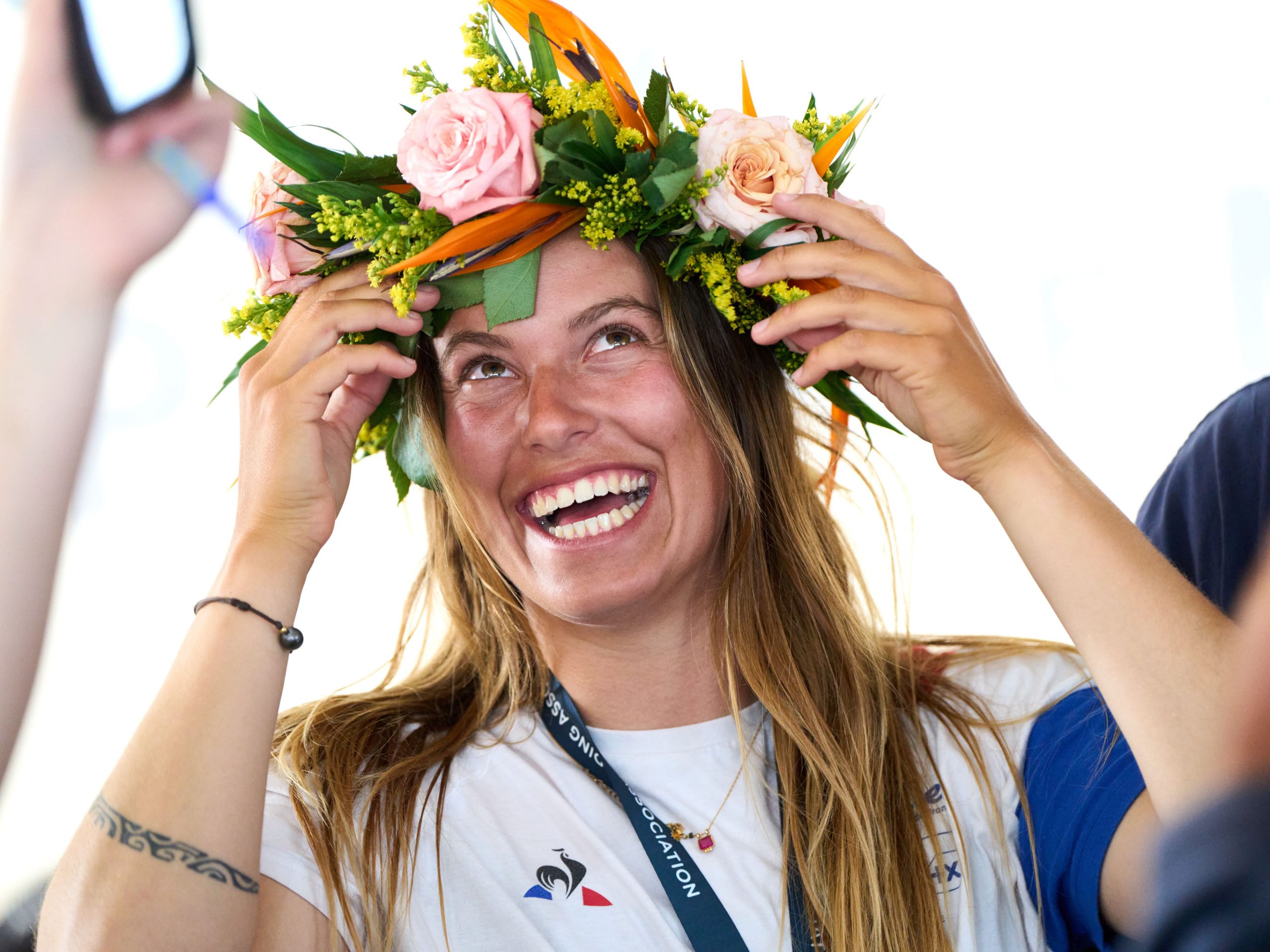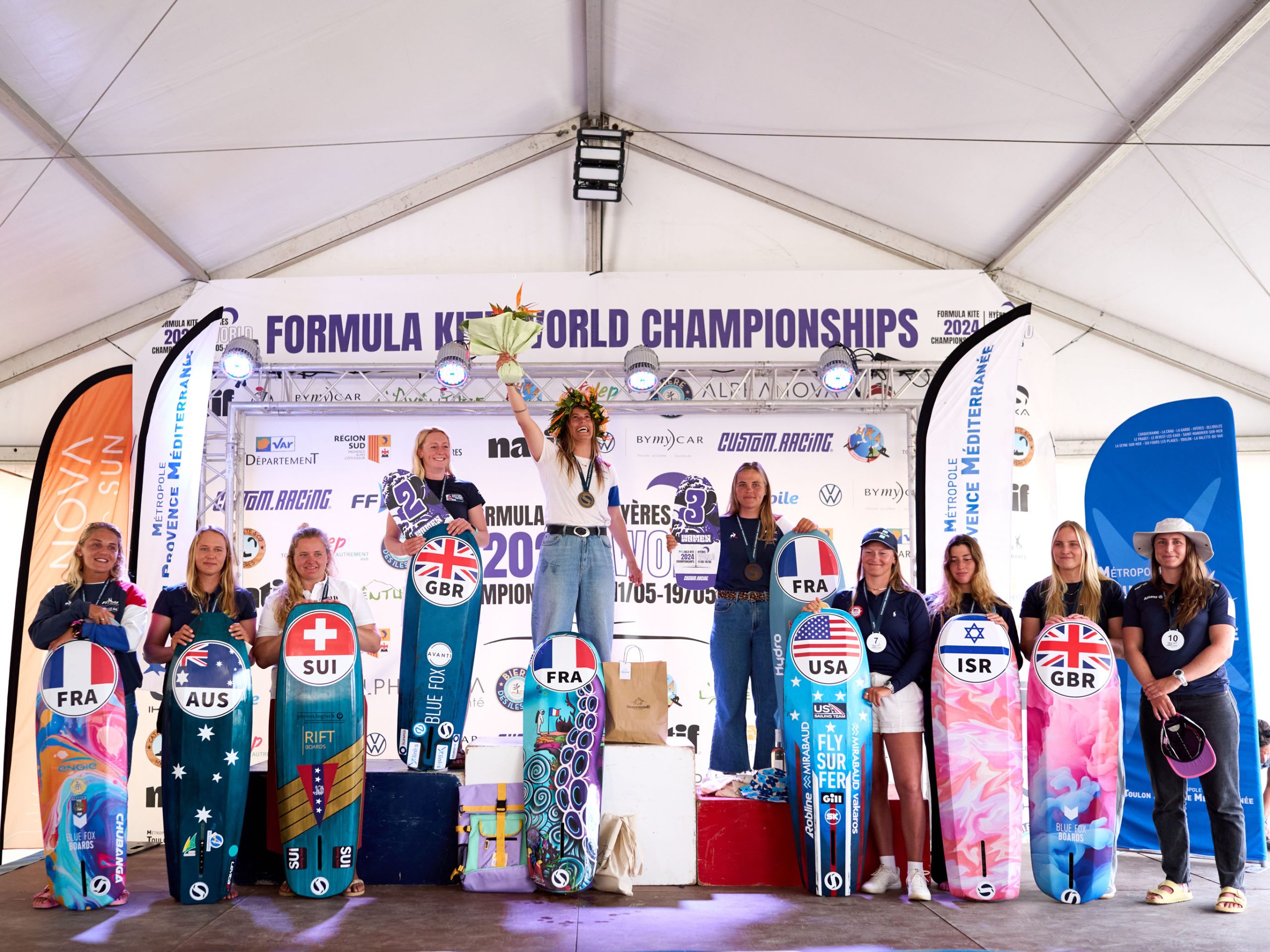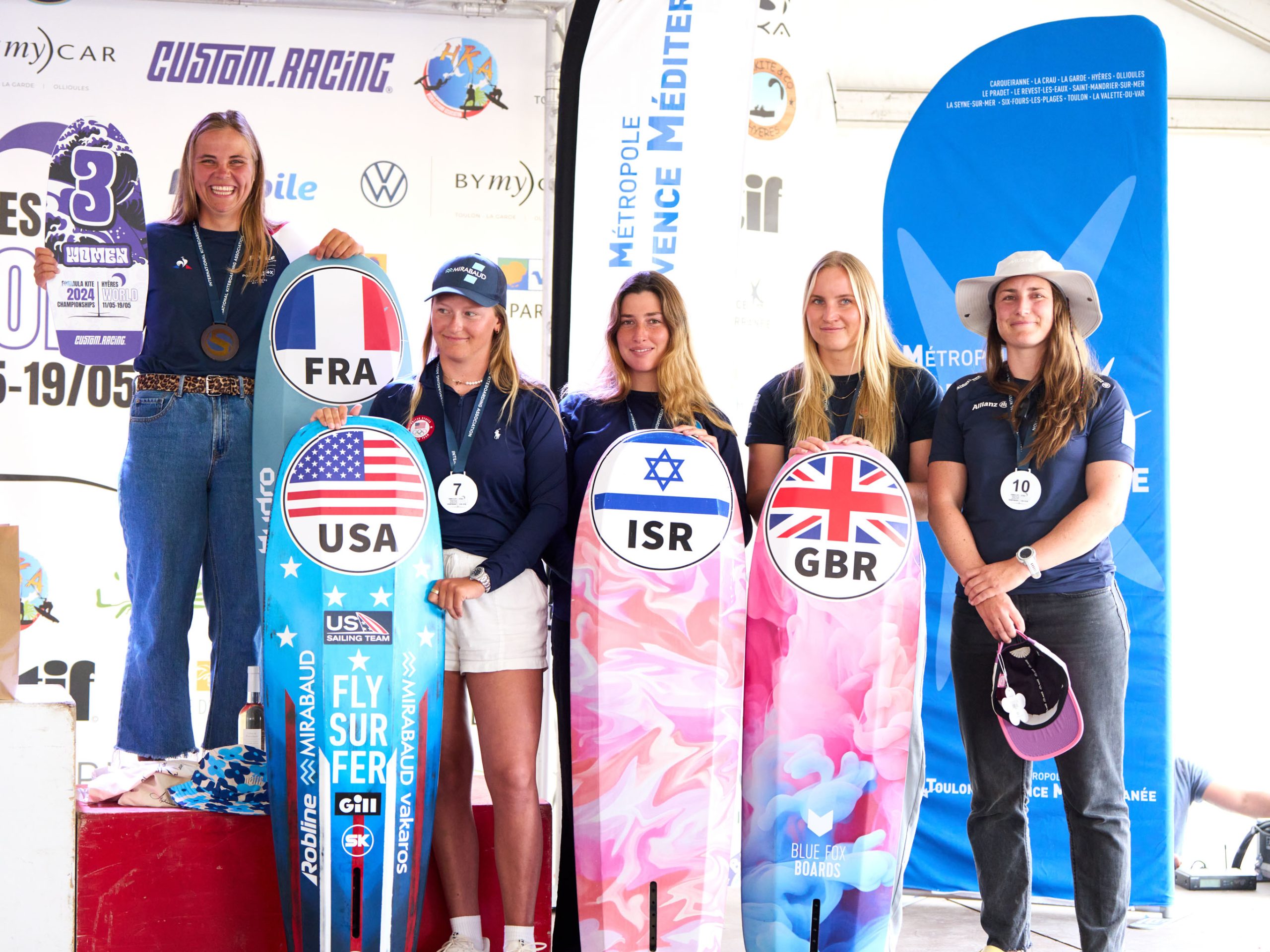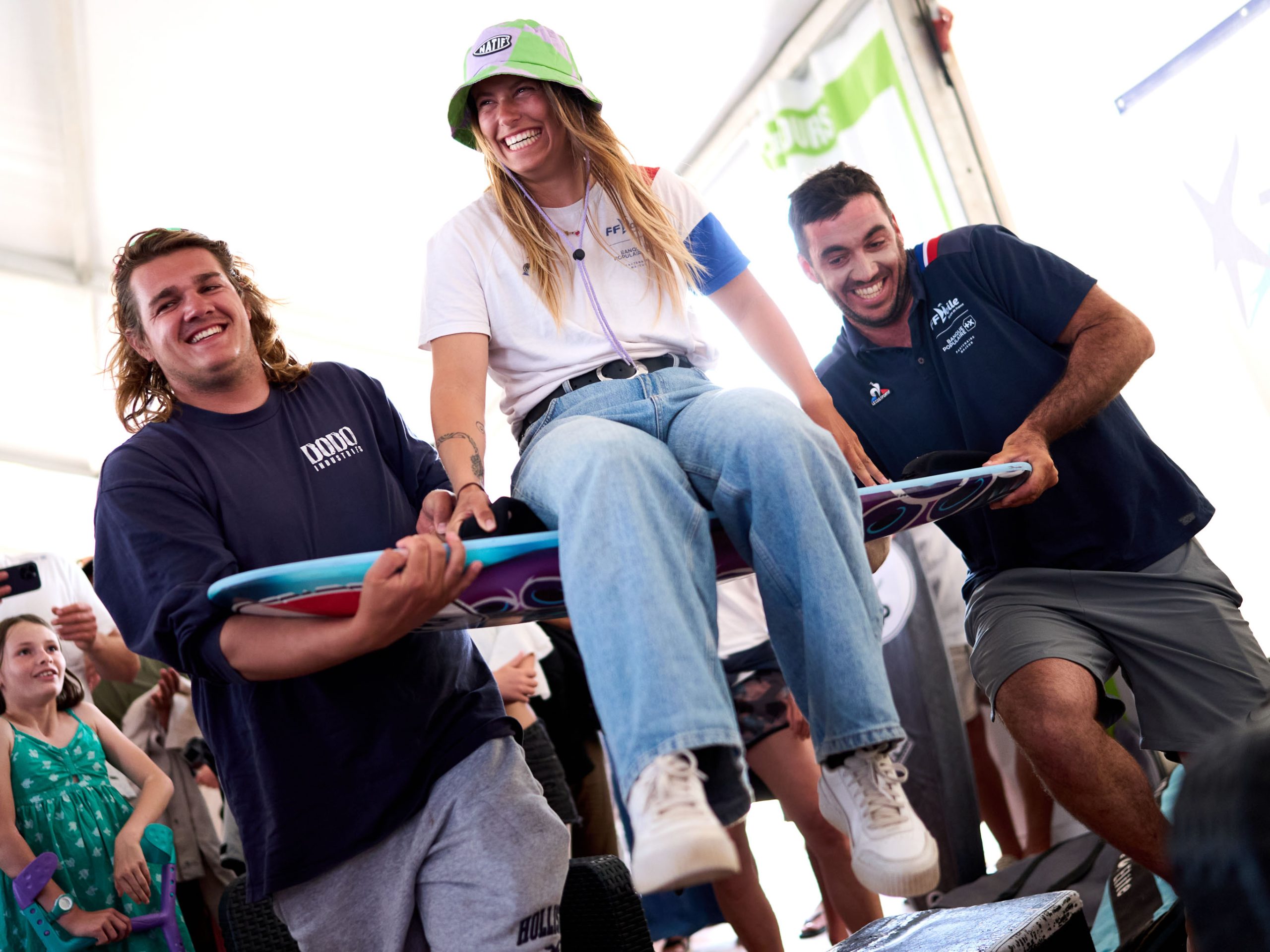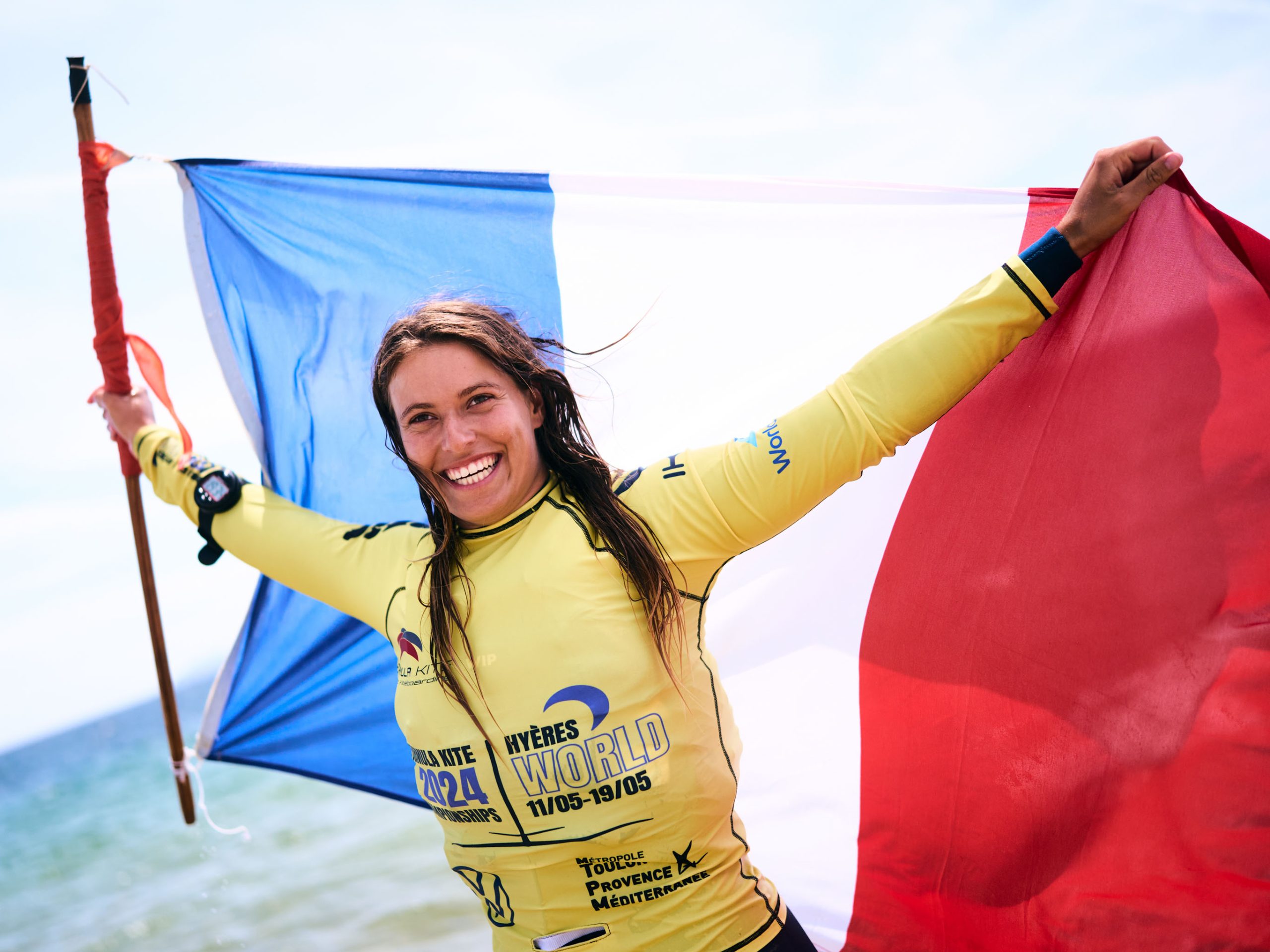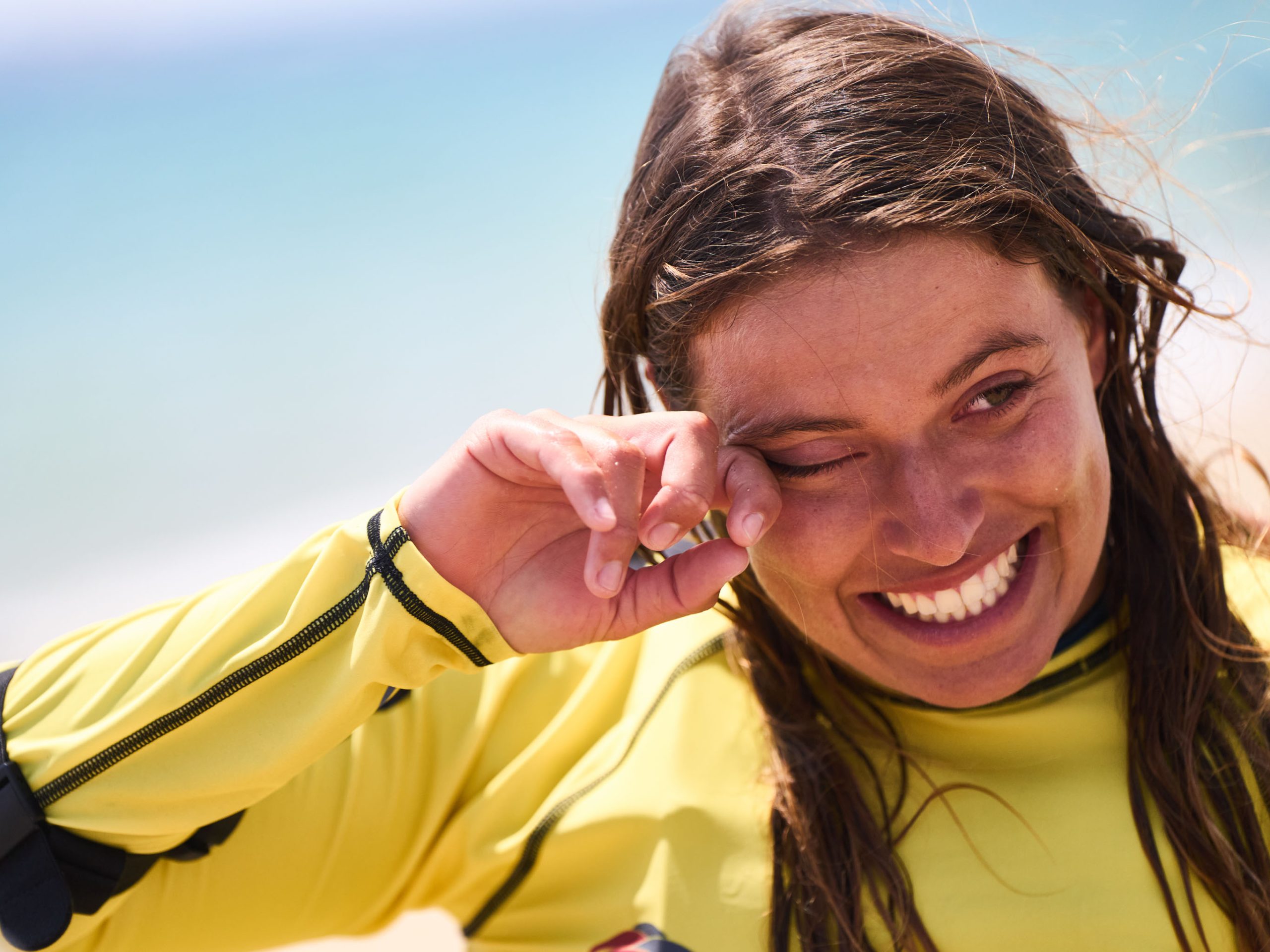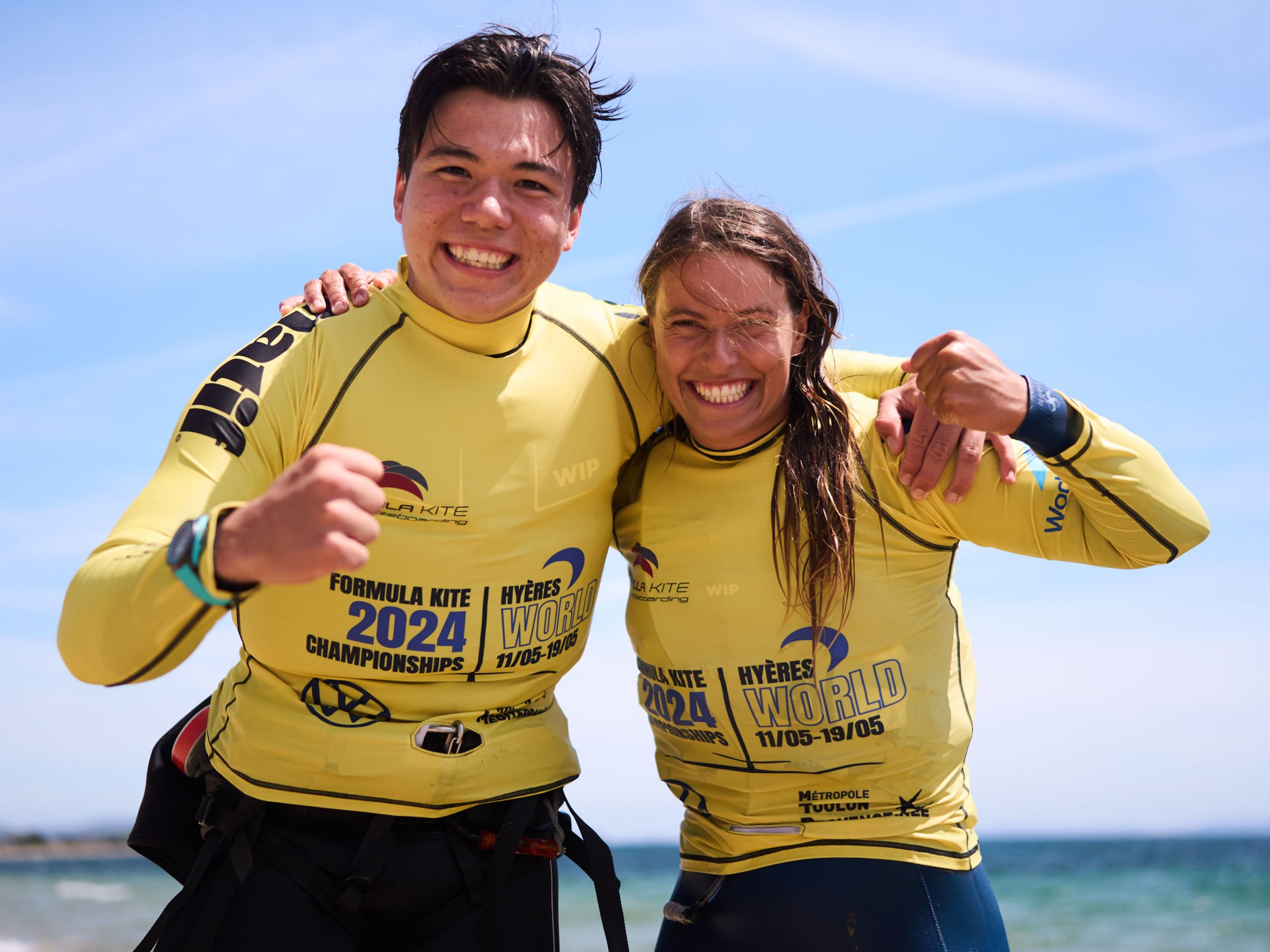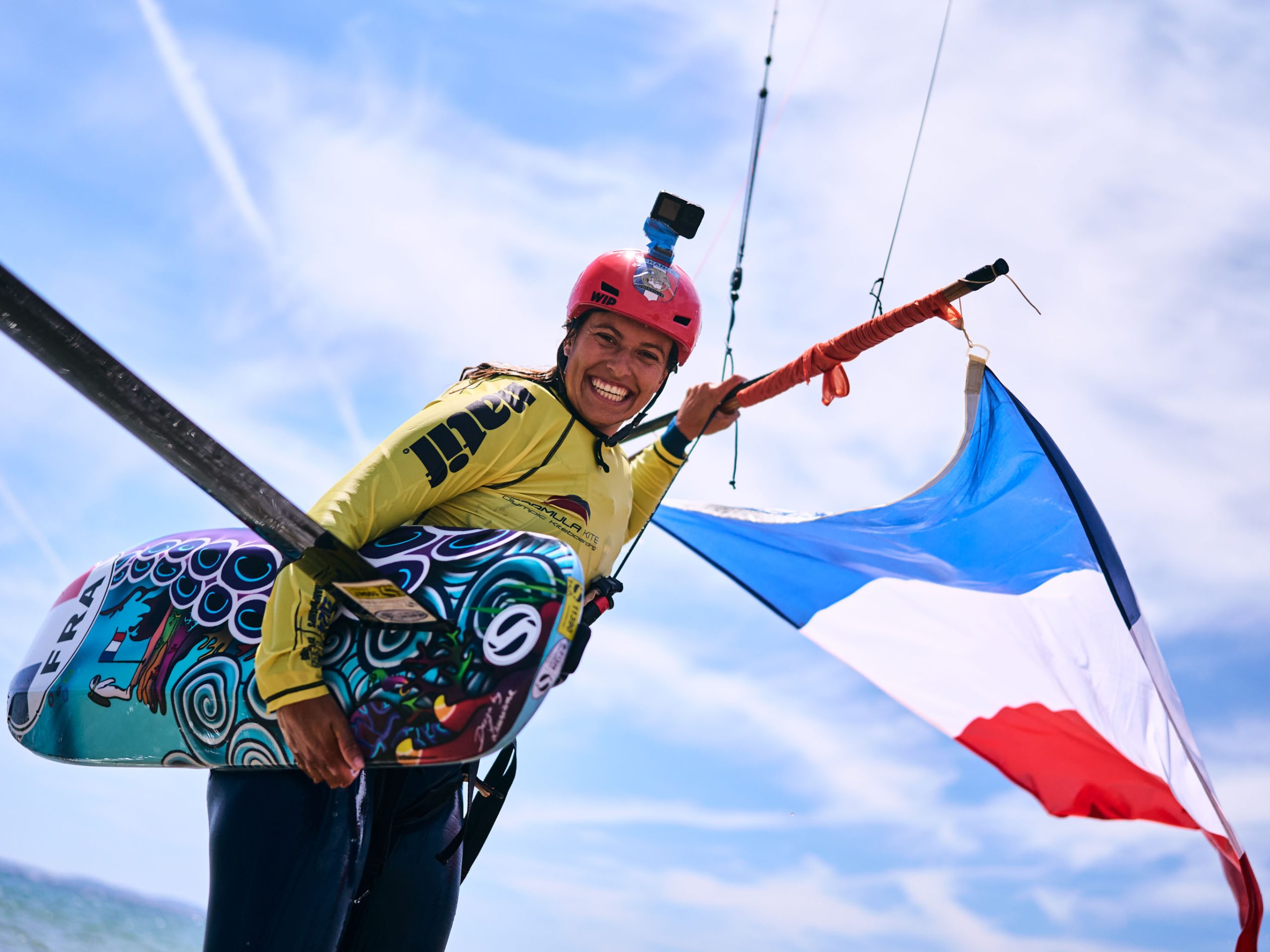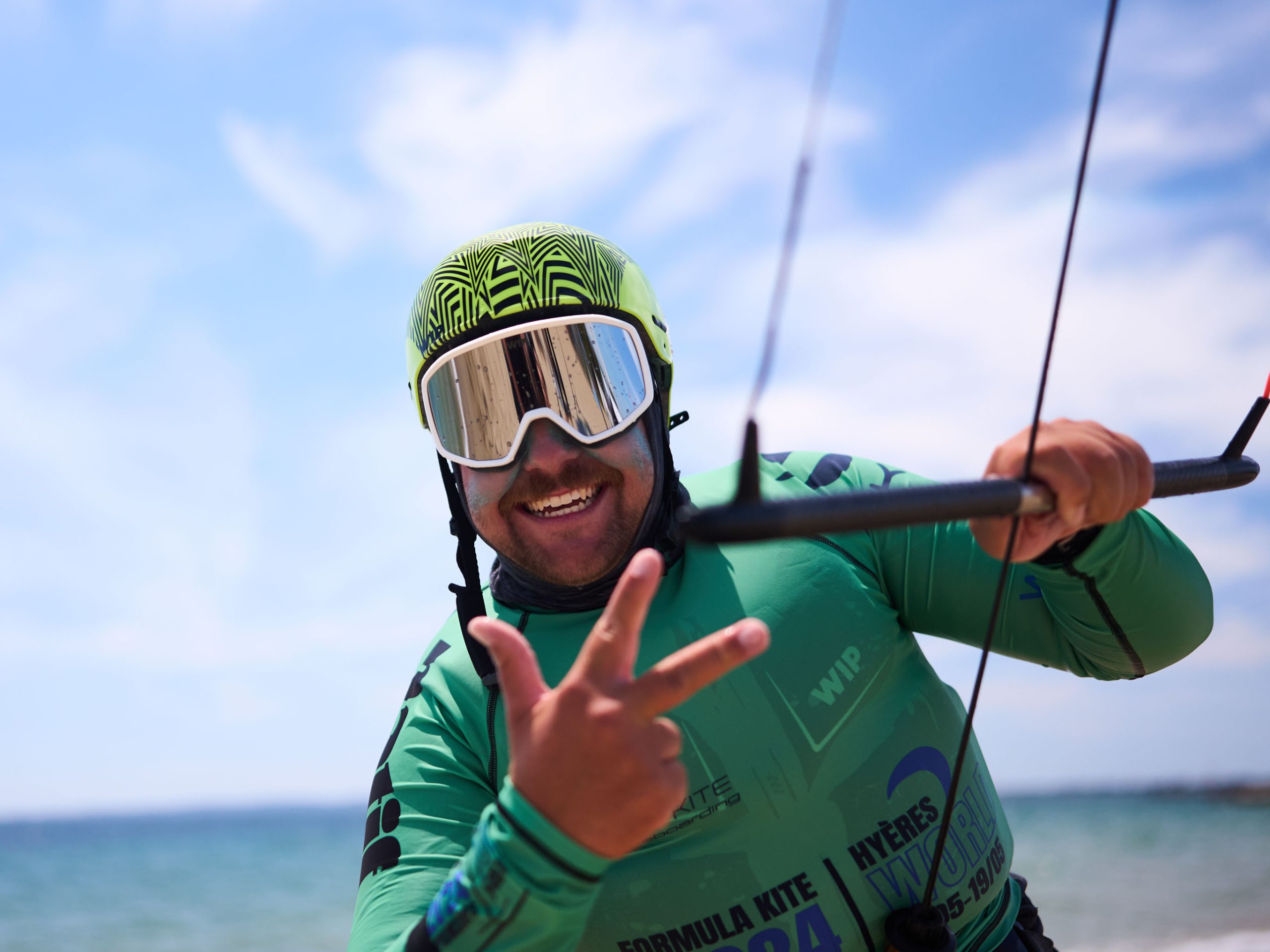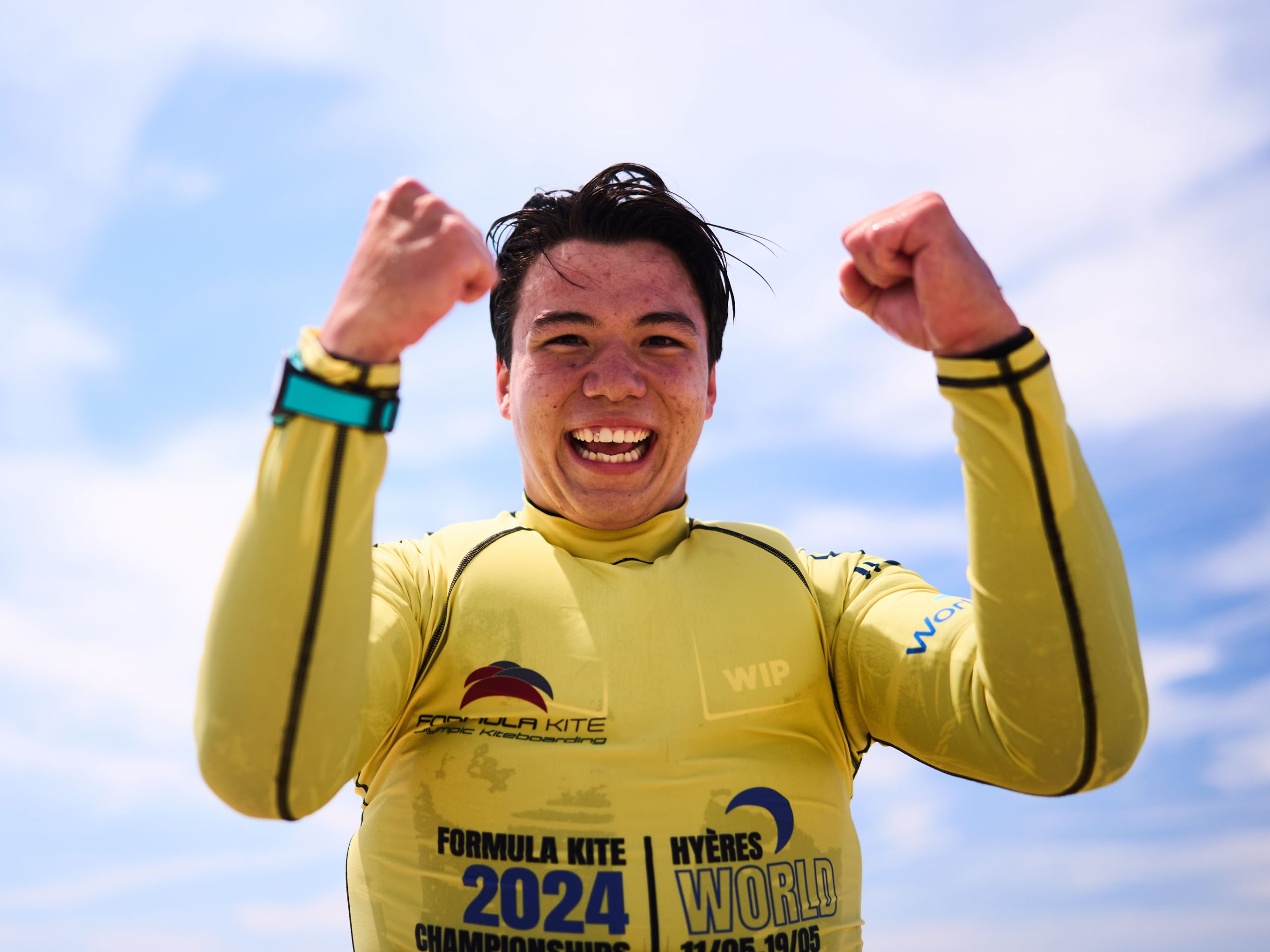Maeder and Nolot defending World titles!
Last week, the ultimate test of endurance awaited all riders who gathered in Hyères from around the world to give their best at the Formula Kite World Championship. With 124 competitors from 35 nations, nearly every corner of the globe was represented. From Germany to New Zealand, from Colombia to Finland, all fighting for the hardest-earned gold medal in kitesurfing history.
Several reasons leading-up to the Worlds suggested that this year’s World Championship would produce extraordinarily competitive races. Firstly, this was the last international competition before the Olympic Games, thus the final chance for federations to nominate or select their athletes – an absolute boost for international rivalry. For instance, the focus was on the German duel between Florian Gruber and Jannis Maus or the Polish competitors Maks Zakowski and Jan Marciniak, who had only secured their national spots a few weeks prior at the SOF in thrilling races (see last article). Additionally, the early timing of this year’s Championship meant that the riders had little time to be physically and mentally on top of their game after winter training.
From the very first race day, 78 men and 46 women were put to the test. With winds of 18-25 knots and very short, steep waves, absolute focus and outstanding control, were the keys to winning races. On slightly underpowered 11m kites or extremely powered-up 15m VMGs, both fleets raced at up to 75 km/h across the course, leaving no room for mistakes.
Since the first three days of competition were part of the qualifying series, with the men’s and women’s divisions split into three and two fleets, respectively, there were multiple winners each day. Both defending champions, Lauriane Nolot (FRA) and Max Maeder (SGP), demonstrated why they had maintained their favorite roles in all races this year by winning. Bruno Lobo (BRA) and Jessie Kampman (FRA) also performed extraordinarily, winning three races in their fleet. Despite winning three races, Axel Mazella (FRA) collected unnecessary penalty points due to a missing but necessary marking on his board, turning his victories into second-place finishes.
The Côte d’Azur presented a slightly gentler yet challenging east breeze on the second day. The three men’s fleets started on slightly underpowered 15m foil kites. The decreasing forecast kept the caddies on the beach in suspense, as no one wanted to miss the timing to switch to a bigger kite nor be the first to switch in case the wind remained stable. The wind played a trick on the riders, decreasing as predicted, prompting most to switch to their 23m VMGs, only for the wind to pick up again. Those who waited patiently had the advantage and fully exploited it.
Mazella, as did the 17-year-old Maeder in his fleet, dominantly won all four races. Among the women, Poema Newland (FRA), after a disastrous first day, won three out of four races, climbing back into the top 10. In the other women’s fleet, Nolot and Elli Aldridge (GBR) shared the four race wins, showing that despite shifting winds and changing conditions, good starts and a clear view of the racecourse were crucial.
On the final qualification day, the wind changed direction to determine the divisions into gold, silver, and bronze fleets. The sun and increasing westerly winds made it a beautiful day to go racing. The new wind direction introduced new tactical options. In the classic Mistral direction, the right side of the first upwind course was often favored, leading to various start options being tested throughout the day. As the wind increased, the course reverted to a “normal” speed course with less tactical finesse and more raw speed. Among the women, Aldridge and Nolot once again took most of the race wins, while among the men, Mazella won all four races, and “The Robot” Maeder won three out of four. Jannis Maus (GER) and Riccardo Pianosi (ITA) alternated race wins in the third fleet.
Thus, the gold fleets were set, and in the next two days, they decided who would advance to the medal races. With a forecast returning to the east, it was clear early that the Mistral wouldn’t blow intensely that day. Hence, the gold fleets of men and women started at the lowest wind limit. At 6 knots, the key was staying in the “pressure” zones on both up and downwind courses, minimizing maneuvers. Each maneuver not only risked falling off the foil and wasting precious minutes restarting but also cost time that was better spent sailing in a straight line. There are a few specialists in this wind range, with Riccardo Pianosi almost always finishing at the front. Maeder had to settle for second place for the second time in the competition, but he won the rest of the day’s races.
Among the women, a spectacle unfolded at the first windward mark of the last race: several riders misjudged the lay line and had to use a specific pumping technique to round the mark, causing a backlog and kite collisions. Jessie Kampman and Elena Lengwiler (SUI) benefited by avoiding the tangle to take the top two positions.
On the second day of gold fleet racing, Mother Nature offered excellent racing conditions. The new easterly wind direction and coastal topography made it crucial to utilize the left side of the course without getting sidelined. Among the men, Maeder held an unchallenged first place. In contrast, the second spot, which provided a direct ticket to the medal race final, was fiercely contested between Mazella and Pianosi. By the end of the day, only one point separated the two, making Mazella’s earlier penalties particularly painful. Thus, he would need to win the semifinal the next day and start the final without an advantage point, a much harder path than being directly placed in the final.
Among the women, Nolot and Aldridge solidified their spots in the medal race final with consistent top–five finishes, thanks to their substantial lead.
Thus, it was once again Super Sunday! With directly onshore, thermally supported winds, all semifinals of this year’s World Championship started on time. Despite the intense competition, all first-place finishers in each semifinal advanced, making both finals of the top four from the qualification series. With Lauriane Nolot, Jessie Kampman, and Poema Newland, the French participation in the women’s final was high, putting Aldridge under pressure. Nolot started at the leeward end of the short start line to fully utilize her speed and the slightly stronger wind on the left side. A quick tack under the fleet secured her lead to the first windward mark, and she maintained her position to win her second world championship title. The reigning European champion, Ellie Aldridge, completed the podium with silver and Jessie Kampman with bronze.
“Although I was a bit nervous at first, I knew my home spot would bring me luck!” – Nolot
In the men’s final, defending champion Maeder chose the opposite strategy. Starting at the windward end of the line, he could control all other riders due to his right of way and tack at the optimal moment. This tactical move nearly caused a collision between Pianosi and Mazella. Pianosi had to avoid Mazella’s unsanctioned tack at the last moment, setting both riders back. Maeder then held off Bontus to secure his second world championship title. At the finish line, Maeder celebrated this impressive and well-deserved achievement. Riccardo Pianosi completed the men’s podium in second place, and Valentin Bontus in third.
Now, all eyes focus on Marseille, just 60 km away, where kitesurfing will make history in just over two months. The Olympic debut of this breathtaking sport will be held here by the top 20 nations in the world, marking a milestone for all athletes dreaming of being part of the world’s biggest sporting event.
![]() written by Jannis Maus
written by Jannis Maus![]() photos by IKA / Robert Hajduk
photos by IKA / Robert Hajduk

